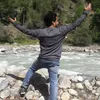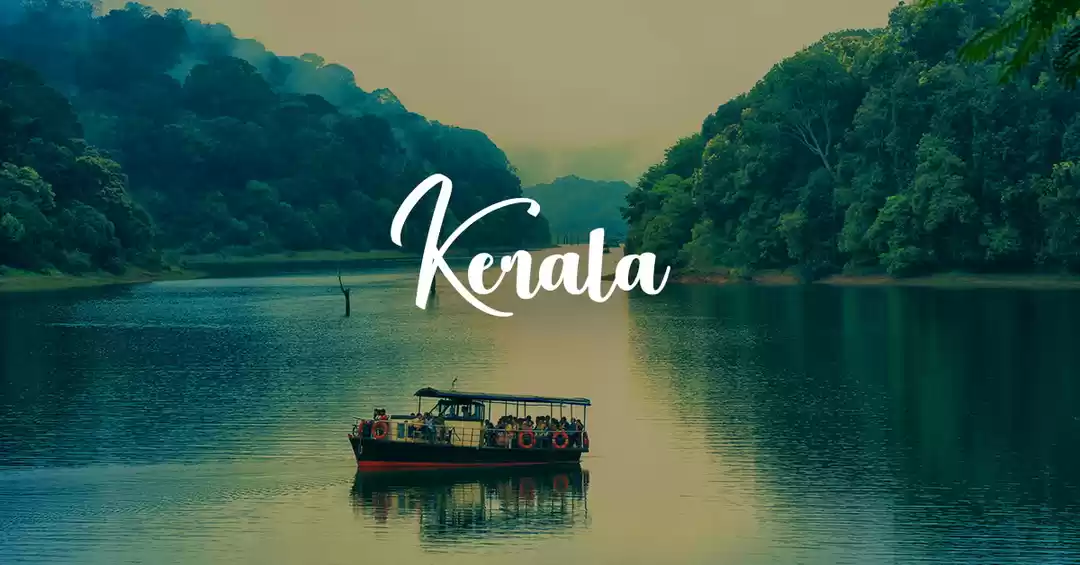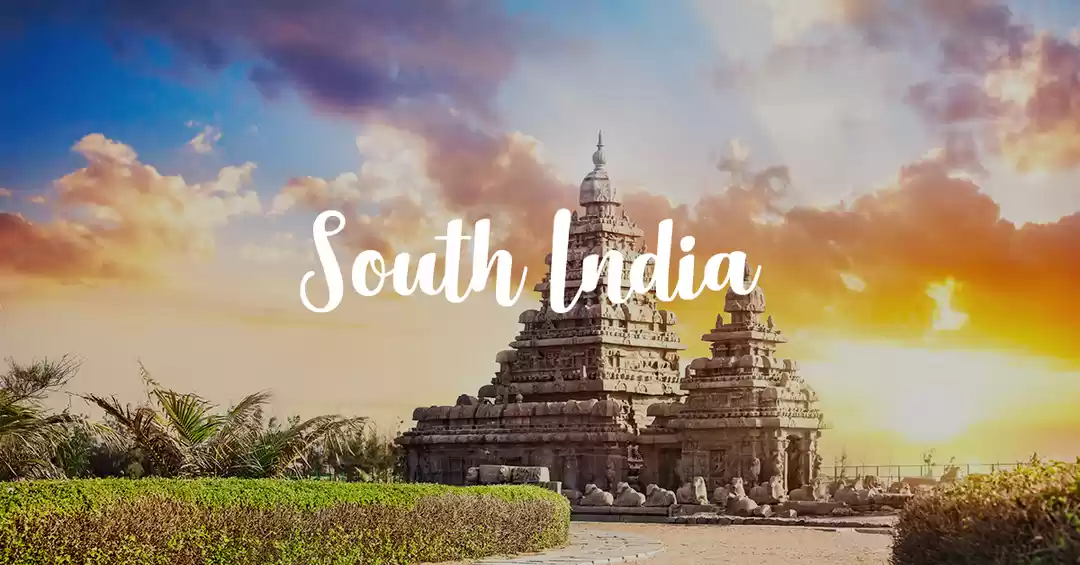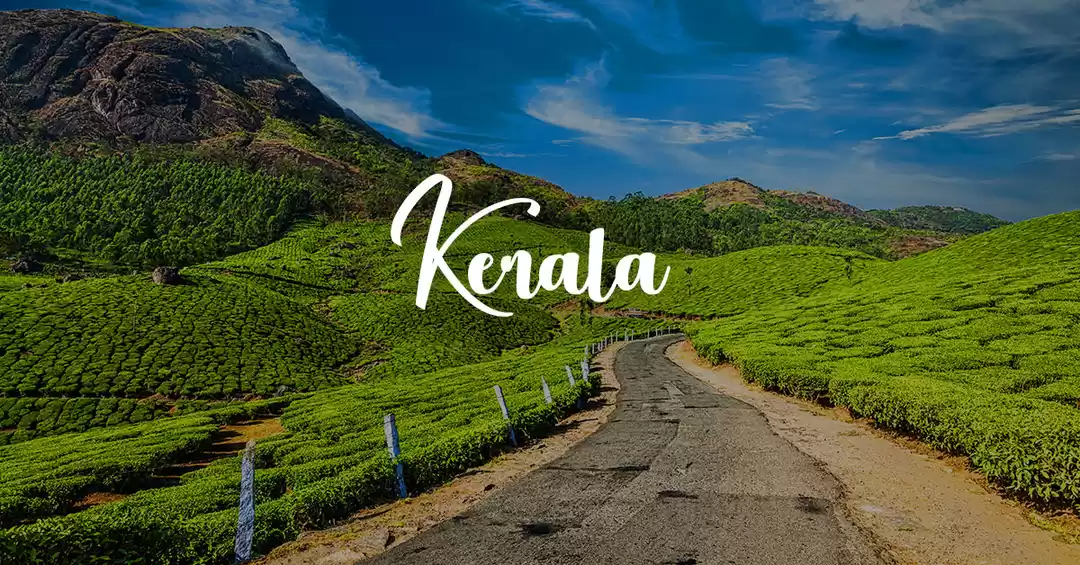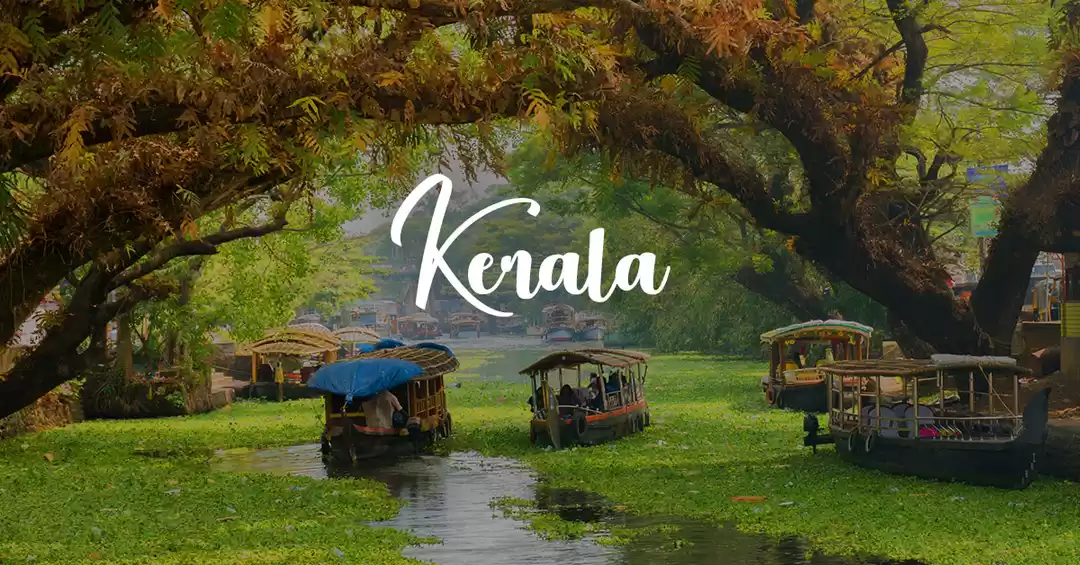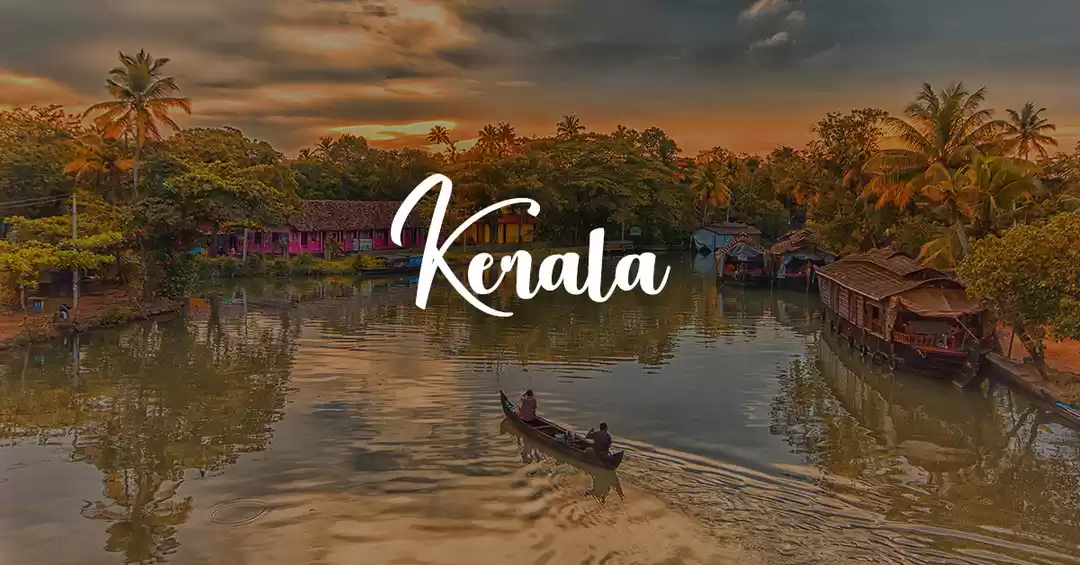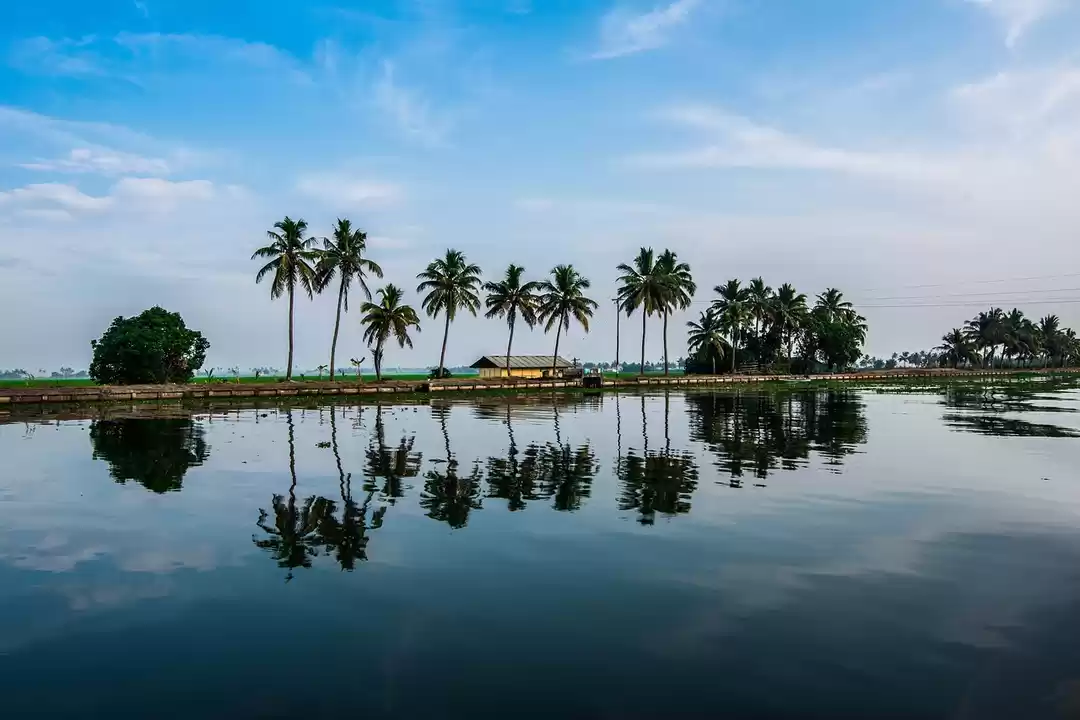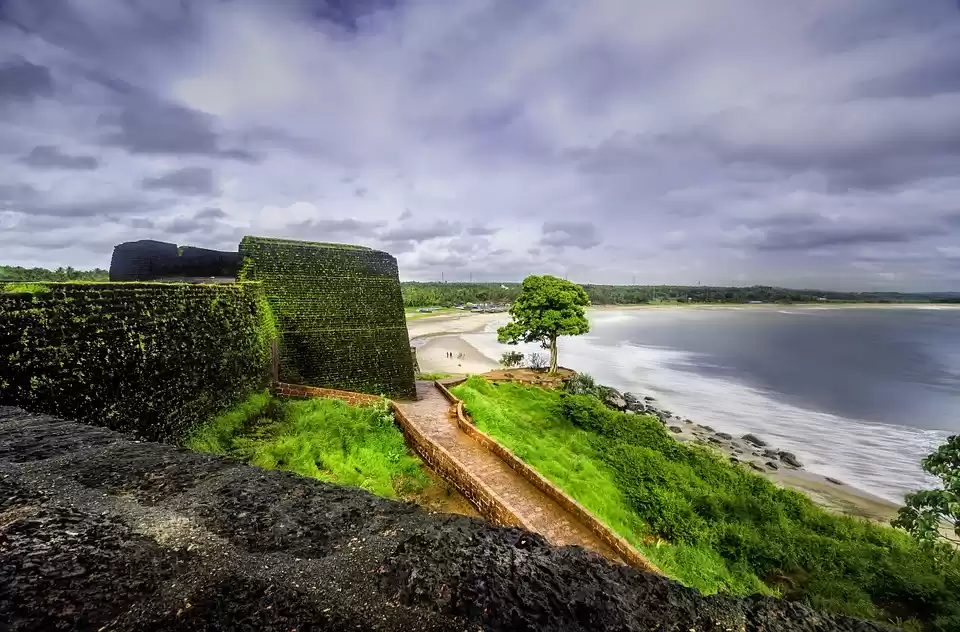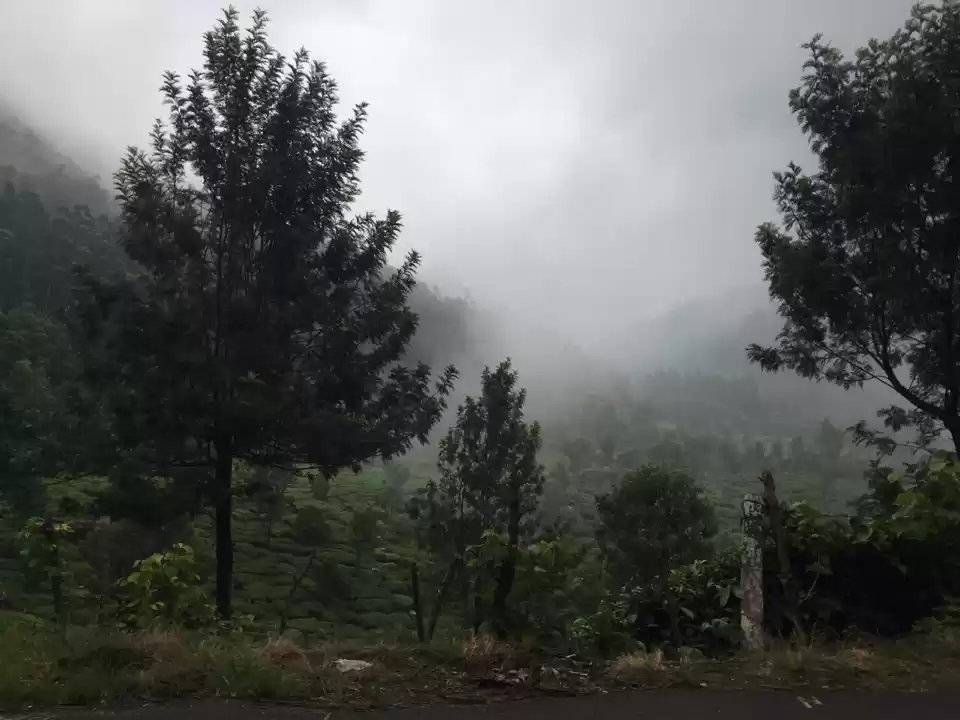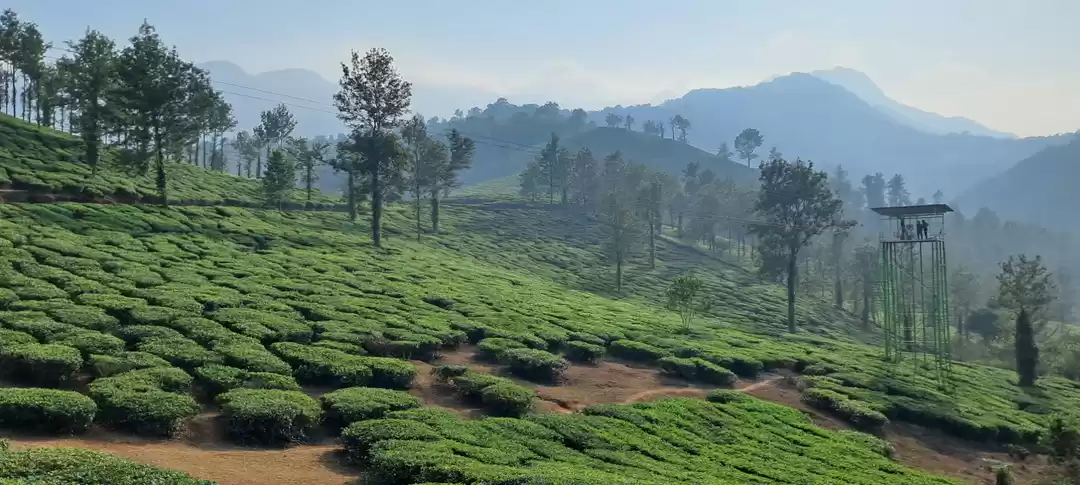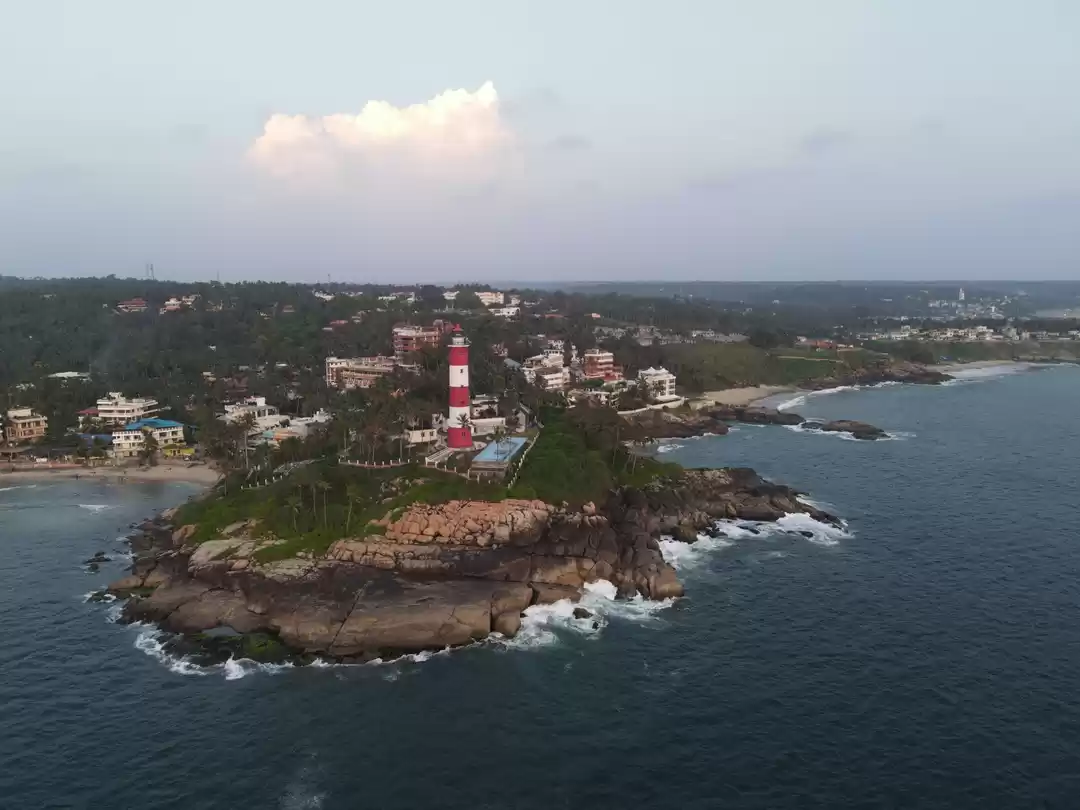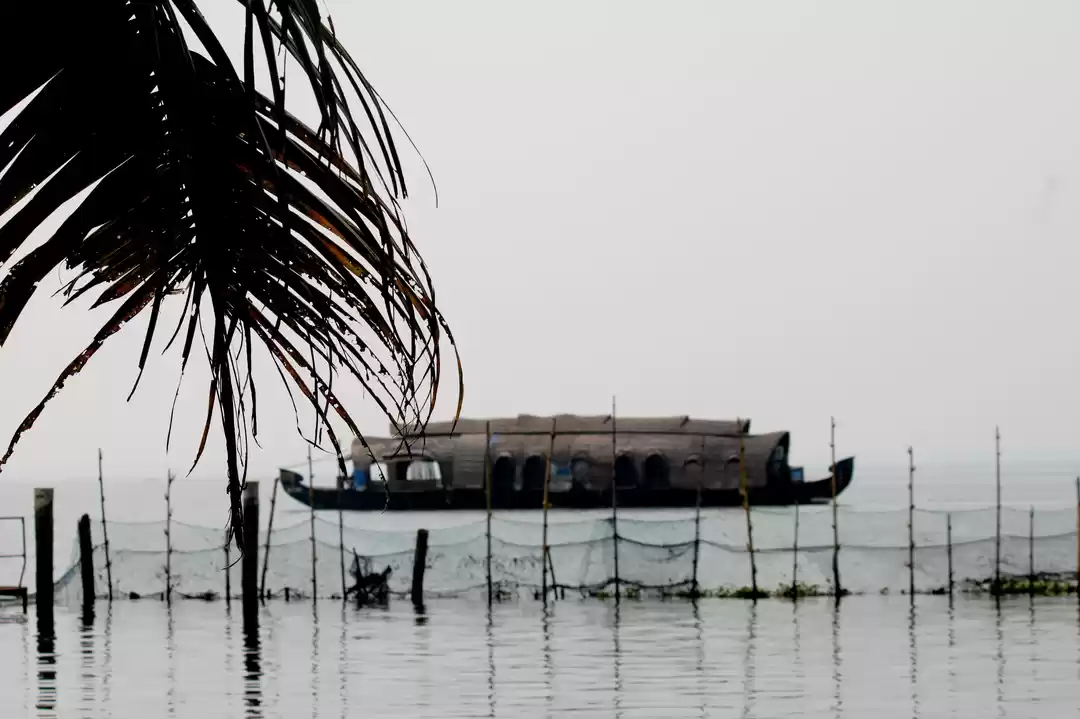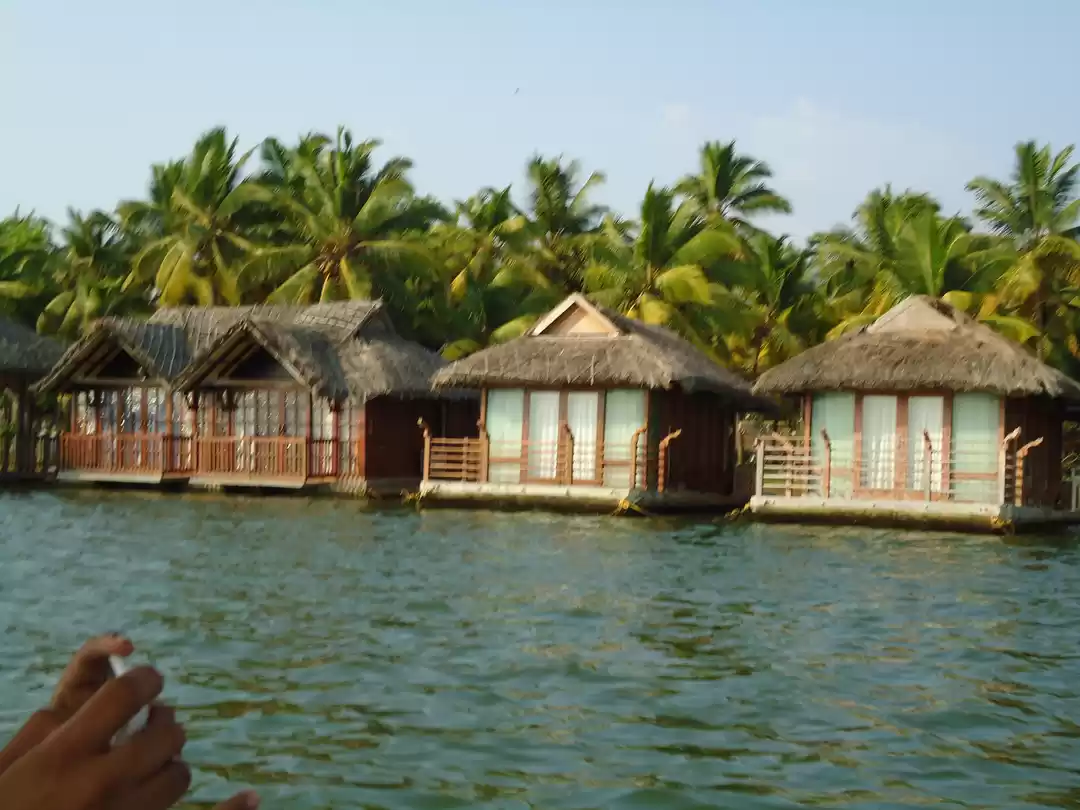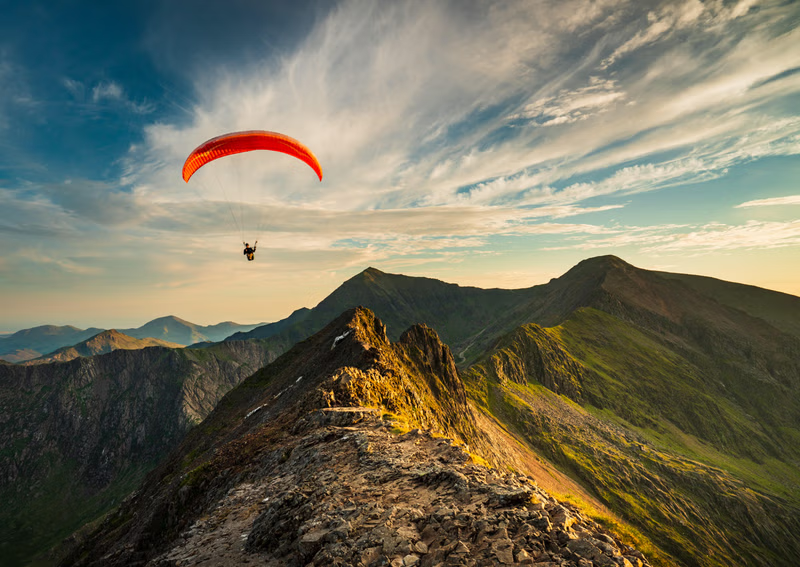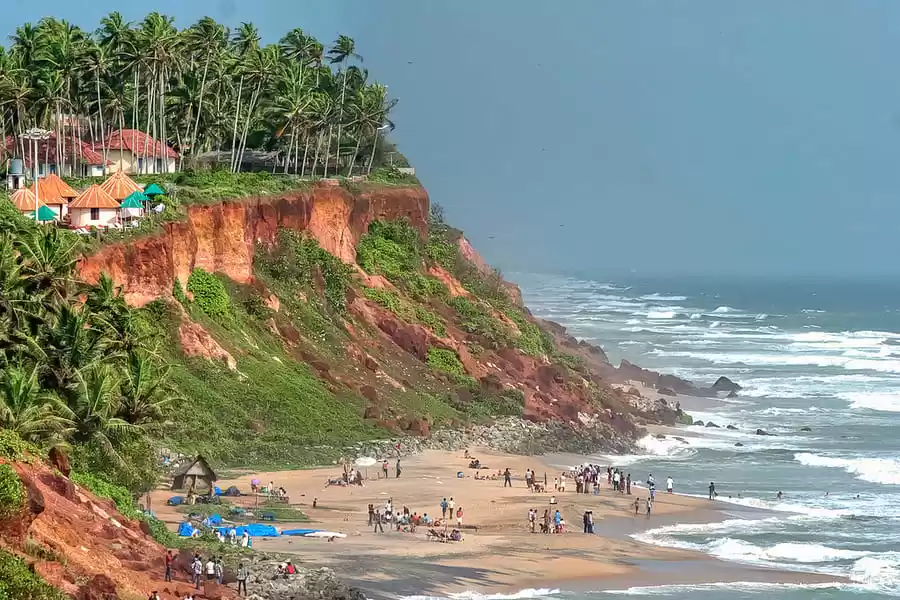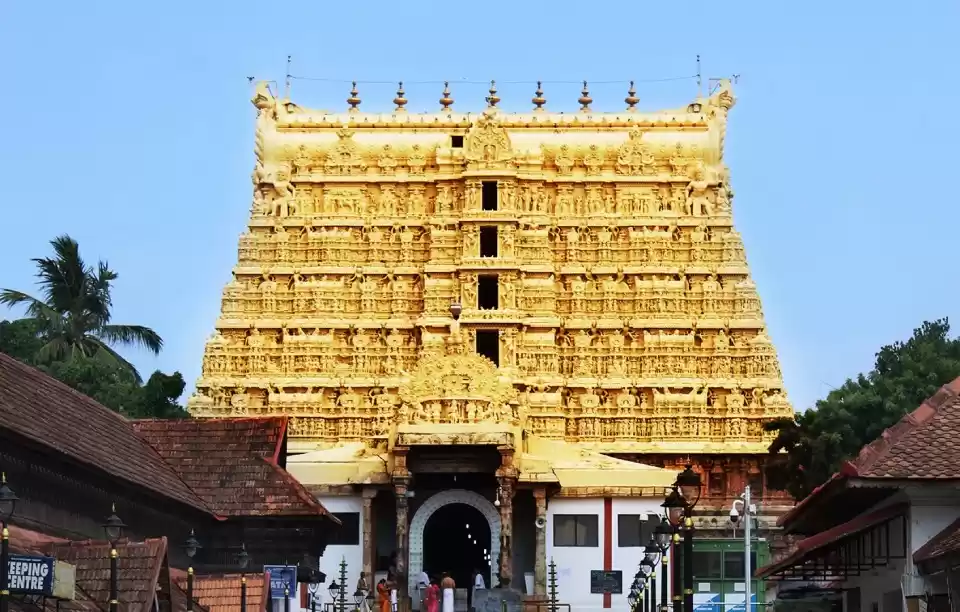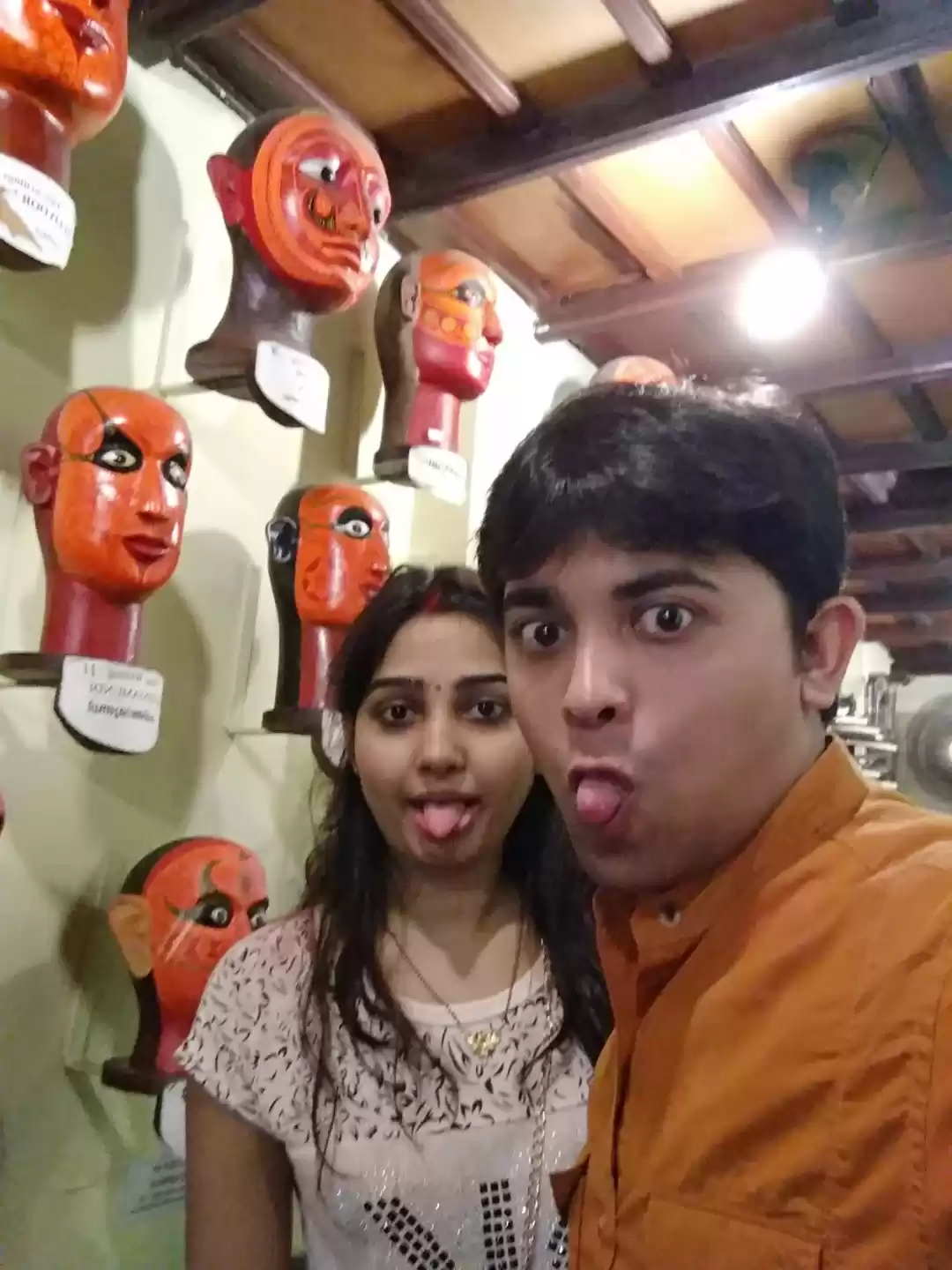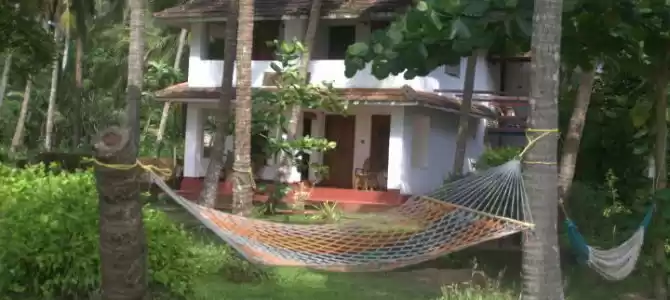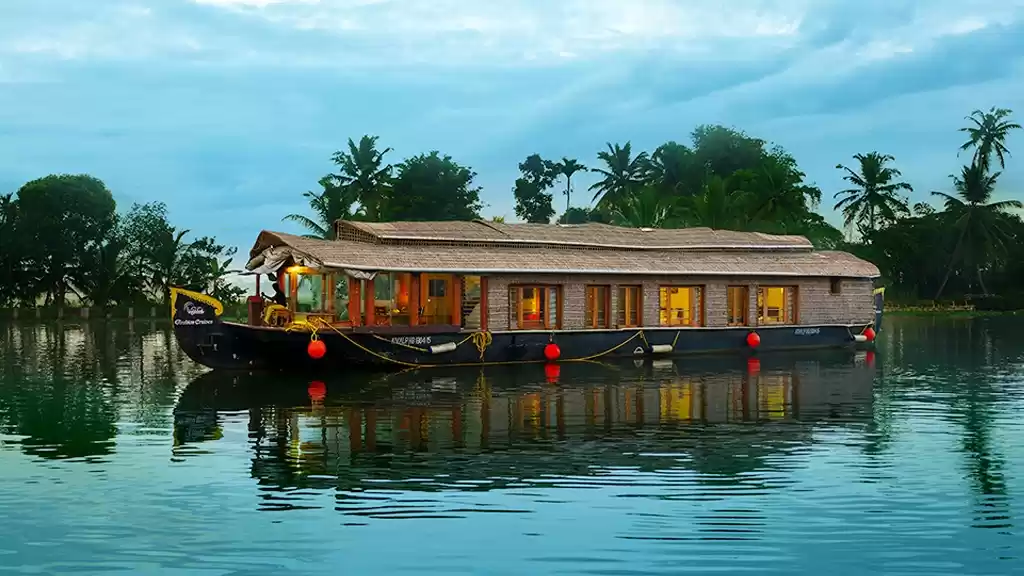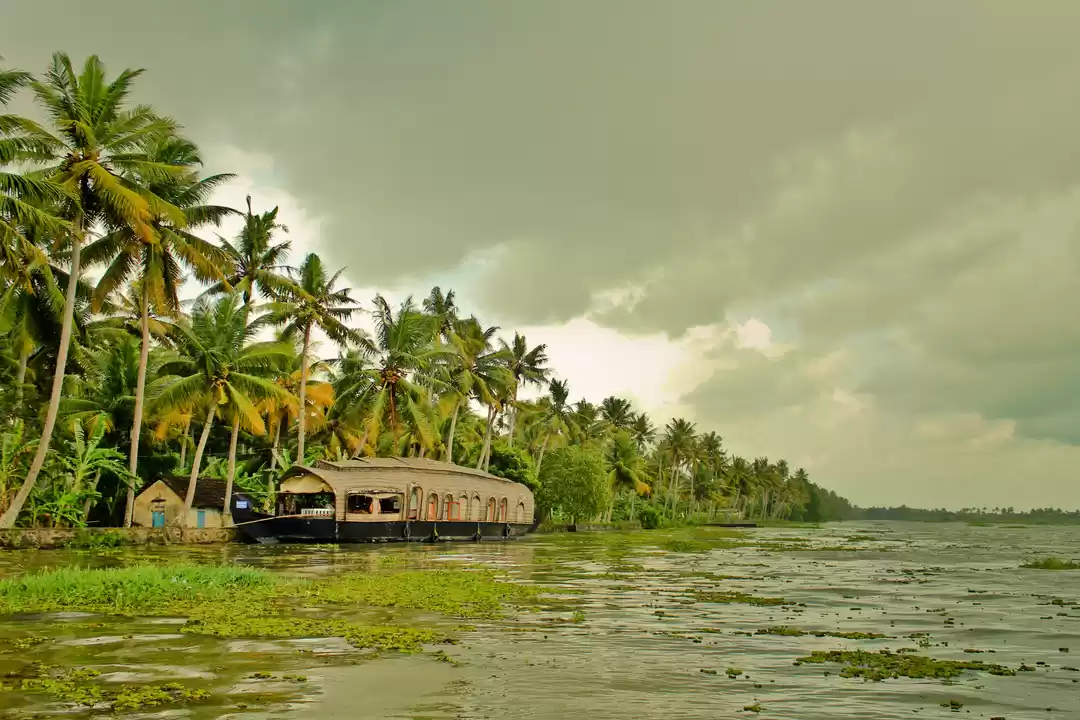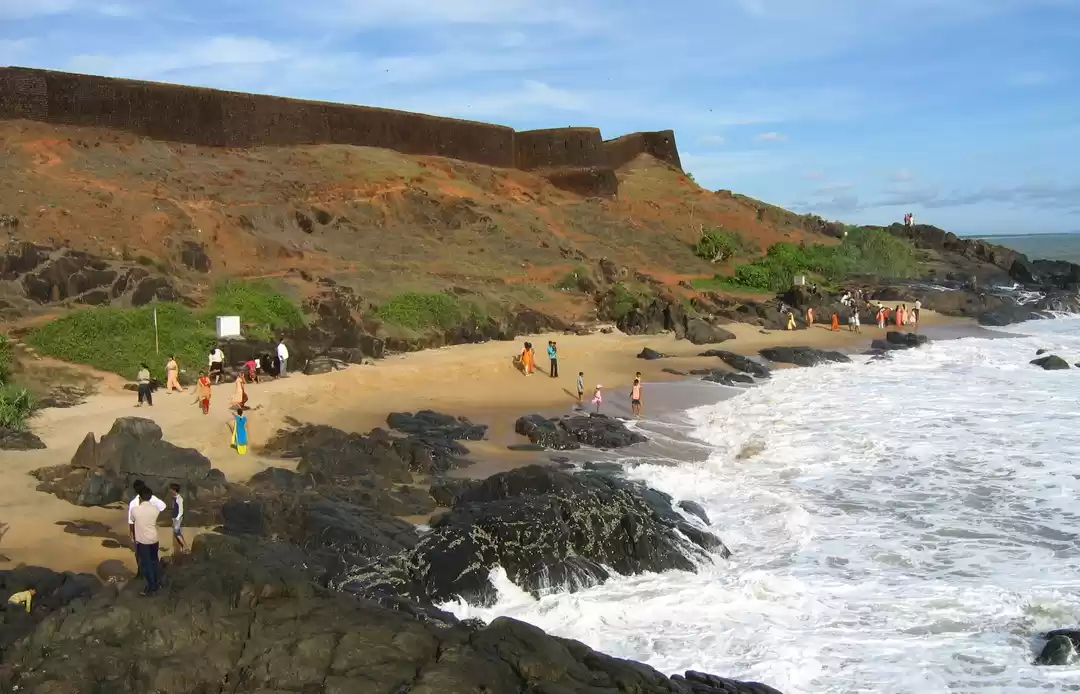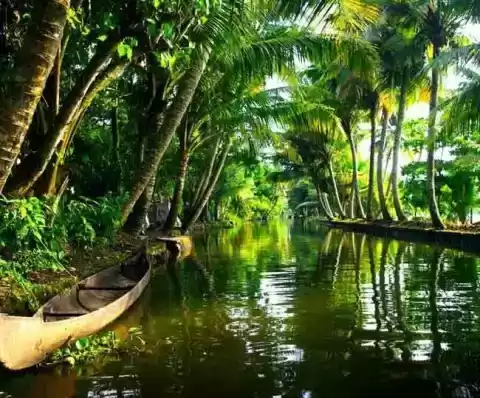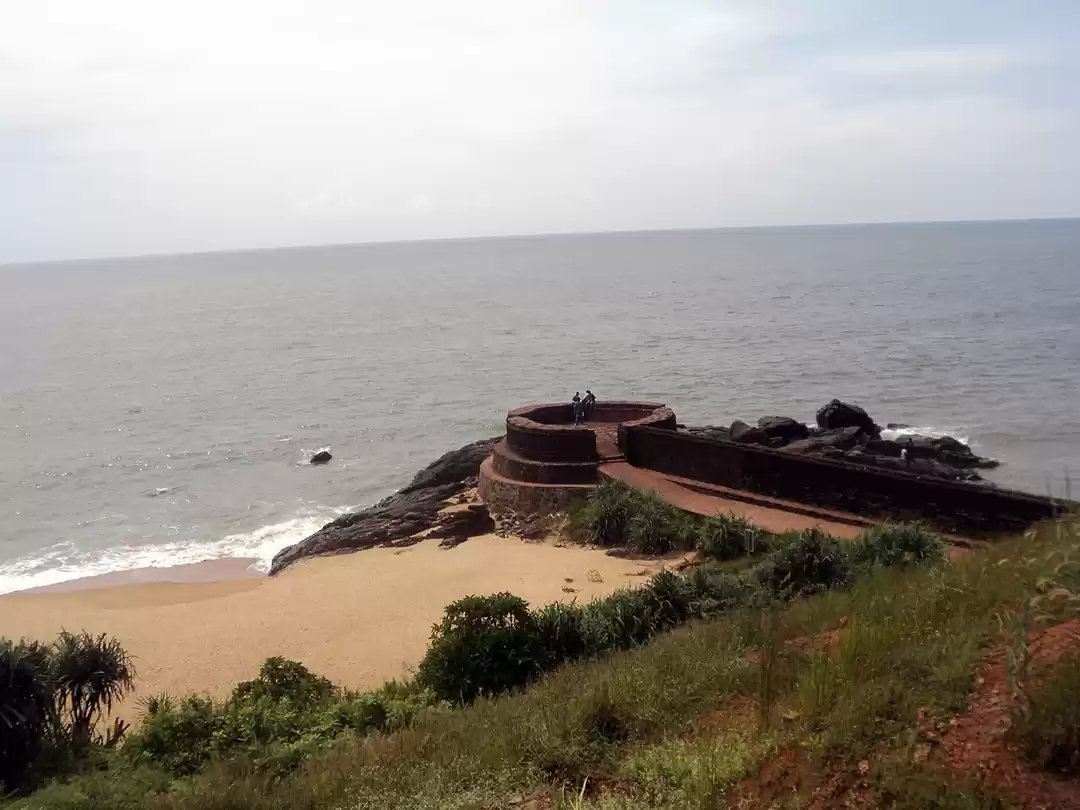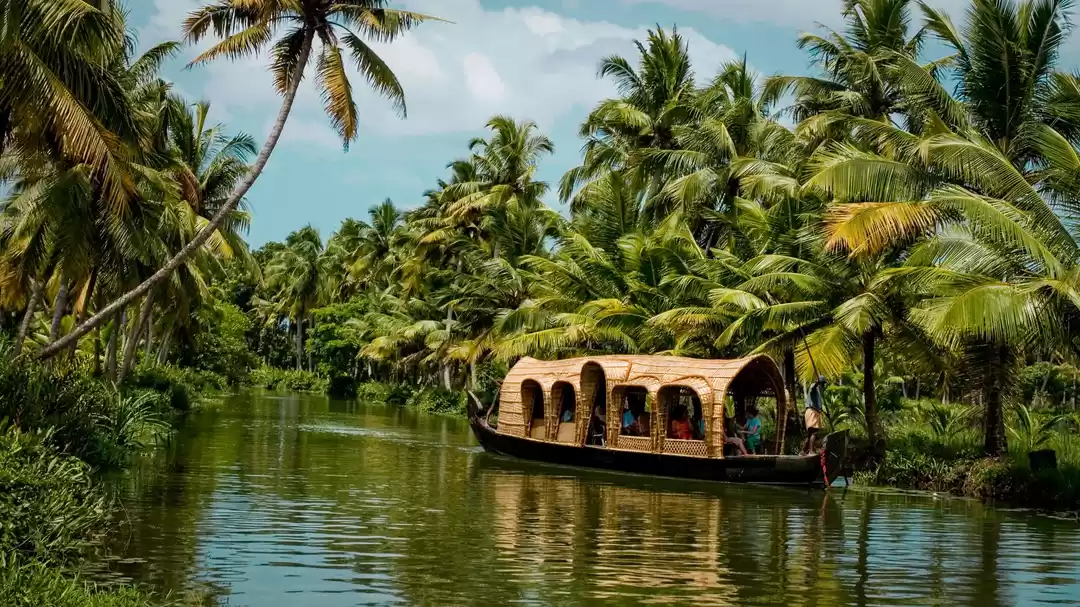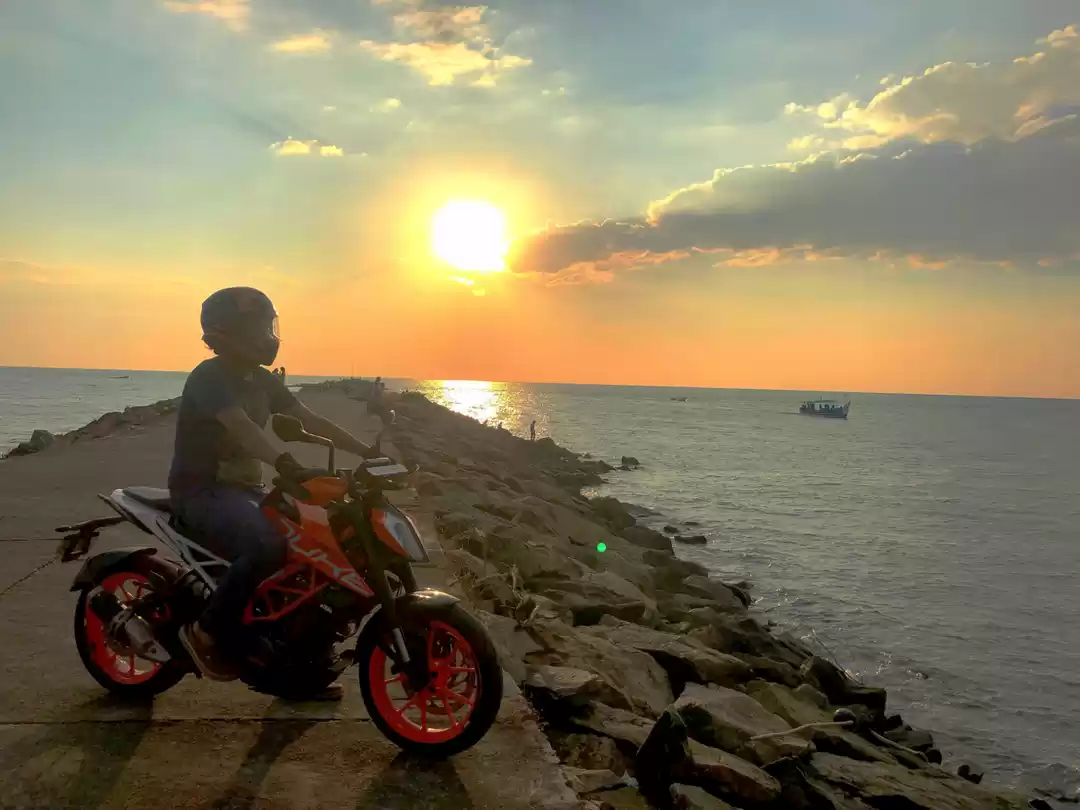
As we are amidst a pandemics COVID-19, the world that we knew of, the way of life we are all accustomed to for years and years is all set to change. Though not many see this coming, I am sure that the way we lived our life’s, the way we traveled, before this global pandemics is all set to change. Tourism will take a backseat now since many rules and regulations are bound to be made for overseas travel of all sorts. Let along our generation, the so called millennial, our earlier generation too would have never experienced such mass lockdowns, leading to economic collapse of the nation. Maybe I am overthinking, maybe no such thing would happen, maybe we would all go back to how it all was earlier.
So with these thoughts I indulged myself in my travel planning work, which I started for a client before the lockdown was declared. Now Kerala as a state is what I am going to explore for all of you. Of all the tourist destinations in India, you can find nearly everything in a single state that is Kerala. Be it lust green forests, serine beaches, awesome hilly roads leading to heaven, water sports and who can miss those backwaters. So Kerala as a state would do justice to all your travel fantasies. I am a native of Kerala and have never explored this paradise. Since I started earning my only desire was to be able to visit a new country every year. I was on track with goal since last 3 years. However my father was of the opinion that there is no point seeing the other countries if you have not completely explored your own. With the current situation and the fear that normalcy won’t be attained immediately for an overseas travel very soon, I ponder on my father’s opinion. So with this renewed love for my native land, I set to explore all possible travel content online related to Kerala. I can proudly say that Yes some destinations in Kerala can put your dream foreign destination to shame.
How to reach any part of Kerala is a detail that you can easily find anywhere, because of the well published tourism in the state. A railway line running across the length, would be the cheapest means of travel. Domestic and International airports too are available for a hassle free travel experience.
Kerala
The southern west state of India enjoys a coastline of about 600kms Arabian Sea. Inland are the Western Ghats, mountains whose slopes support tea, coffee and spice plantations as well as wildlife. Kerala is one of the prominent tourist destinations of India, with backwaters, hill stations, beaches, Ayurvedic tourism and tropical greenery as its major attractions. The attraction here pulls domestic and international tourists alike.
It is divided into 14 districts with the capital being Thiruvananthapuram. Malayalam is the most widely spoken language and is also the official language of the state. There are slangs in the way Malayalam is spoken in each district and is a distinguishing factor too!
I will dive deep and give your details about all the 14 districts, their tourist spots. So as the name of this article suggests it’s the A-Z tourism guide for Kerala :). Hope you all find it useful.
Your purpose of travel could be to soak in the lusty greenery, beach getaway, island, luxurious resorts, a pilgrimage, journey to enjoy the mouth-watering cuisine, unique boat house stay in the backwaters, it could be anything. Each district would have something to offer.
Districts in Kerala
1. Kasaragod
2. Kannur
3. Wayanad
4. Kozhikode
5. Malappuram
6. Palakkad
7. Thrissur
8. Ernakulam
9. Idukki
10. Kottayam
11. Alappuzha
12. Pathanamthitta
13. Kollam
14. Thiruvananthapuram
Kasargod
It's the northern most district of Kerala. Kasargod is world renowned for its coir and handloom industries. Fishing is a prime source of livelihood. The fort at Bekal is the largest and best preserved in the State.
a. Bekal fort
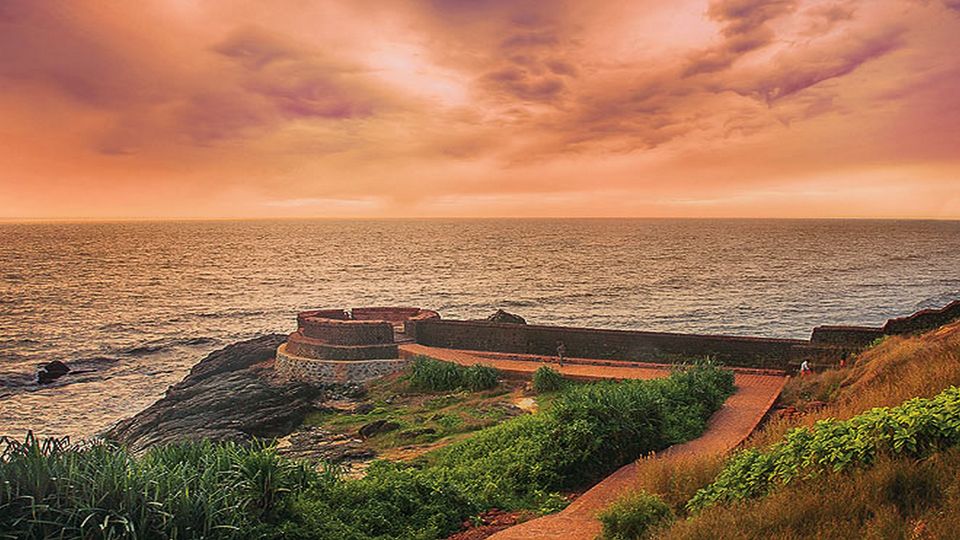
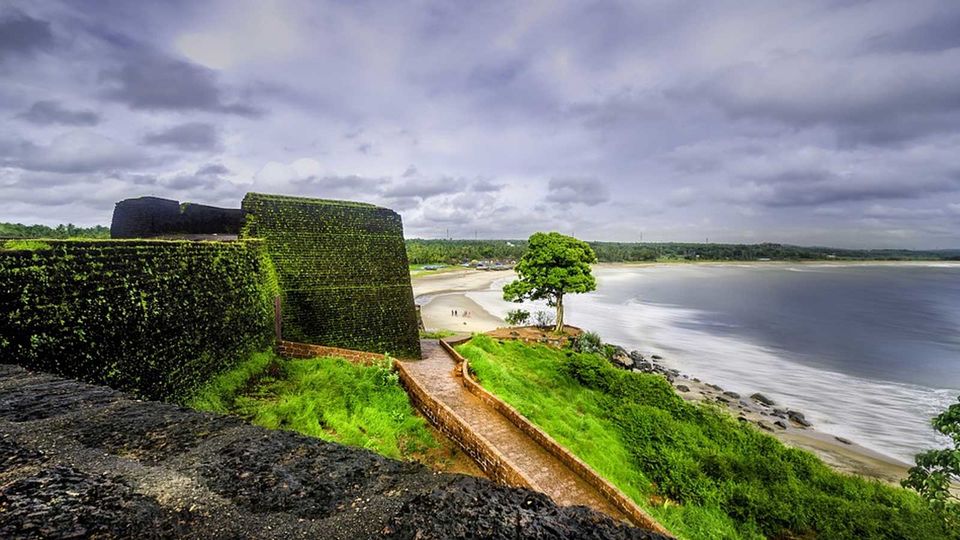
Bekal is small town on the eastern shore of Kerala state of South India. 16 km south of the town on the National Highway, is the largest and best preserved fort in the whole of Kerala, bordered by a splendid beach. Shaped like a giant keyhole, the historic Bekal Fort offers a superb view of the Arabian Sea from its tall observation towers.
b. Ranipuram hill top and Kottancheri hill

Ranipuram is a renowned tourist destination in the northern tip of Kerala, it is situated 750 m above sea level. Once known as Madathumala, it borders Karnataka and boasts of some of the best trekking trails in the area. Regular buses are available on this route and jeep rides are another favourite among all our visitors. The varied trees here includes evergreen shola woods, monsoon forests and grasslands make it a good place to relax and take some time off from the rigors of daily life.
Kottancheri Hills is a part of the majestic Western Ghats in Kasaragod district. Located 30kms north-east of Kanhangad, it is an extension of Ranipuram Wildlife Sanctuary. The forest of Kottancherry merges with the reserved forests of Kasargod. Wild elephants, wild dogs, deer, wild pigs, rare birds, butterflies can all be spotted here. The breath-taking beauty here is a travelers delight, the picturesque scenery, trekking trails and mist-capped peaks.
c. Ananthapura lake temple

Ananthapura Lake Temple is the only lake temple in Kerala. The rectangular lake, supplied with regular spring water, hosts this magnificent temple. Lord Ananthapadmanabha, the deity of the famous Sree Padmanabhaswamy Temple in Thiruvananthapuram is the main deity worshiped . History of this temple dates back to 9th-century. Babia, the vegetarian crocodile and temple guardian, is popular among all the visitors.
d. Madhur temple

Madhur Sree Madanantheshwara-Siddhivinayaka Temple is a popular Shiva and Ganapathi temple located 7 km from Kasargod town, on the banks of Mogral river, locally known as Madhuvahini. Though the main deity of this temple is Lord Shiva more importance is given to Lord Ganapathi.
e. Malom – Coorg of Kerala
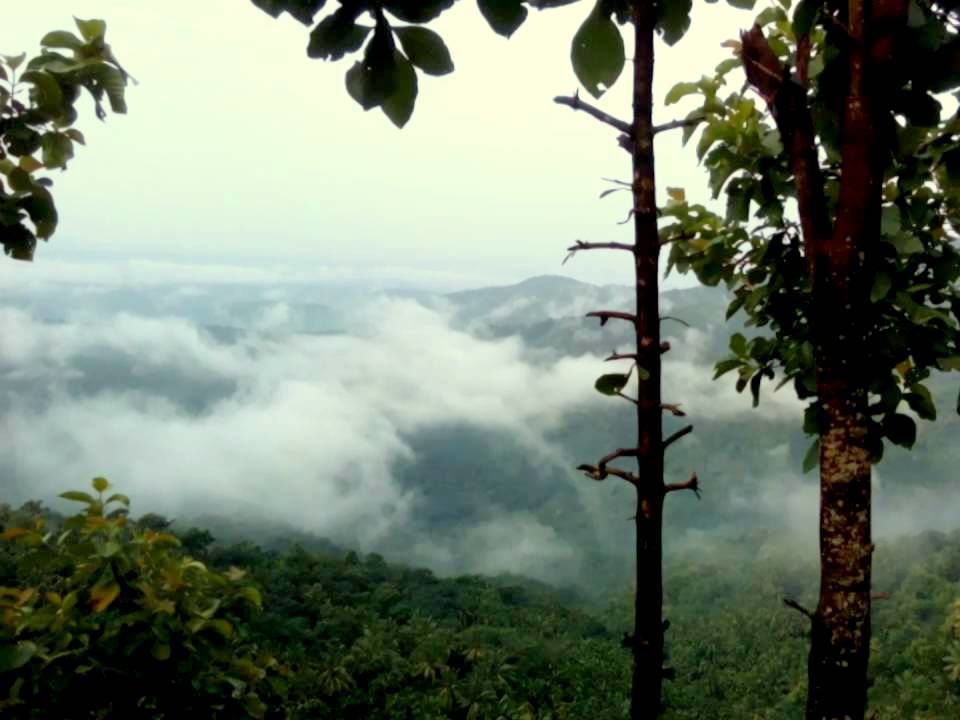
Malom is a small town that lies near the Western Ghats in Kasaragod district. Known as the ‘Coorg’ of Kerala, it is blessed with Nature’s bounty. The word ‘Malom’ comes from the Malayalam word Malakalude lokam (the world of hills). Malom would soon be developed into a bio-eco tourist centre given the fact that it offers possibilities for trekking, waterfalls, and adventure safari to the nearby hills. Malom has a rich cultural heritage, which is quite distinct.
f. Kareem’s forest park

Kareem's forest park is home to vivid fauna offering magnificent visuals of nature at its best. All of it created by a single man Abdul Kareem, who turned a barren land to this paradise, what it is today, a 32 acres eco park. If you are a nature lover and you are thinking of skipping out on this scenic beauty, then definitely you’ll regret it later.
Kannur
Kannur is a coastal city in the south Indian state of Kerala. It was once an ancient trading port. Enduring monuments such as 16th-century St. Angelo Fort, show the city’s significant role in the spice trade. Housed in a former palace, the Arakkal Museum highlights Kerala's one Muslim royal family. The palm-fringed sands of Payyambalam Beach run along Kannur’s western shore.
a. Payyambalam Beach, Thottada Beach, Muzhappilangad Beach, Ezhara Beach, Baby Beach and Meenkunnu Beach

The Payyambalam Beach is an impeccably maintained destination in Kannur. Surfing and swimming options are available for those who seek a little adventure. The gentle waters form a picturesque setting that has been featured in many South Indian movies as well.

Thottada Beach is situated on Kannur-Tellichery highway 8 km away from Kannur Railway station. Thottada beach is an ideal place for a sunbathing and swimming. There are a number of beach houses and guest houses offering accommodation at reasonable price. There is also a dam built across the river 3 decades ago to keep the fresh water from salt water.
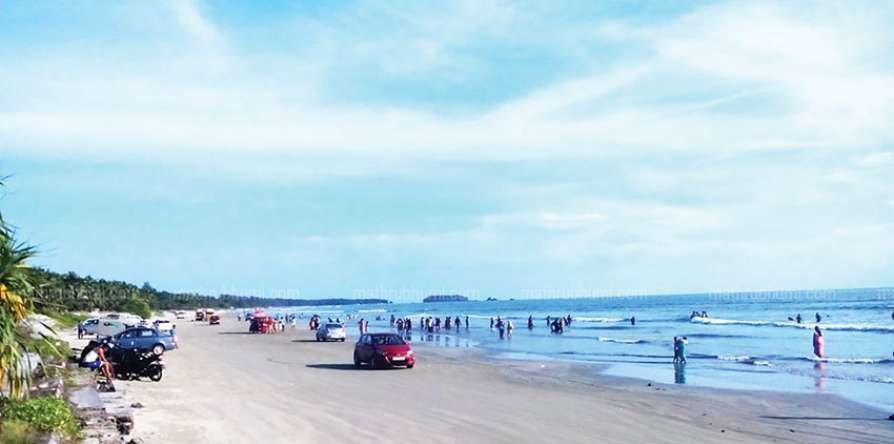
Muzhappilangad Beach is famous for being Kerala's only drive-in beach. It is often considered a swimmers paradise as the black rocks protect the beach from deep currents. This is a perfect way to relax and soak in this clean and well maintained beach. One can also opt for adventure sports like paragliding, parasailing and micro light flights along with water sports, power boating or a simple catamaran ride.

Ezhara is a small fishing village in Edakkad panchayath of Kannur district. During the non-Monsoon period and when the sea is calm, this beach offers the best place for tourists to relax. This long beach is known for sea trawling. Besides, the beach has facility for cycling.

The Baby Beach is actually an extension of the Payamballam Beach. Even if you cannot actually take a dip in the waters from Baby Beach, the panoramic view of the palm-fringed beach and the endless Arabian Sea is more than enough to keep you gripped. Payyamballam Beach, St Angelos Fort, Kannur Lighthouse and the Lighthouse Museum are all very close to the Baby Beach and can be reached in less than 5 minutes.

Meenkunnu Beach is a beach lover’s paradise, devoid of the usual maddening tourist crowds. In local language, Meenkunnu means “hill of fish”. The palm fringed beach is perfect for fishing, swimming or surfing. There is a cliff on the beach which gives a perfect view of the scenery below.
b. Kannur Lighthouse

Towering at the height of 75 feet, the lighthouse in Kannur is the first lighthouse to be constructed in Kerala. First built in 1903, the place has a history as well as cultural significance. The vantage point offers spectacular and awe-inspiring views of the entire district of Kannur, the vast expanse of the Arabian sea, and the Baby beach.

Hidden in the eye popping greenery of the Western Ghats and soaring at a zaw-dropping altitude of 3500 feet above sea level, Palakayyam Thattu is one of the most beautiful hill stations in the entire state of Kerala. This site offers luxuriously dense greenery, sky-touching trees and majestic hillocks, along with low hanging clouds, the view that Palakayyam Thattu enjoys is one that you will rarely find.
d. Dharmadam Island

Located about 100 m away from the pristine shores of Dharmadom Beach, Dharmadom Island has turned into favourite for tourists seeking a secluded and tranquil picnic spot. This uninhabited island is covered with a canopy of coconut palms and dense bushes, surrounded by mainland rivers on three sides and the sea on the other. One can approach it only at low tide, and strolls around the place with a brilliant view of the confluence of the Anjarakandy and Thalassery Rivers.
e. Mapilla Bay

The Mappilabay is a natural harbor. It is located near to the Kannur Fort. It forms one of the main attractions on the Kannur town along with the Kannur fort and the Arakkal palace. Due to its location on the close vicinity of those historic monuments, it draws a large number of tourists. Since it is located on the Kannur town, it becomes an easily accessible destination.
f. Aralam Wildlife Sanctuary

Spread over a 55 sq. km area of forests on the Western Ghats, the Aralam Wildlife Sanctuary is among the finest of its kind in Kerala. The entire area is covered in tropical and semi evergreen forests and is a truly riveting sight.
One can catch sight of herds of elephants, gaur, sambar, spotted deer, barking deer, Nilgiri Langur, Hanuman Langur and the Malabar Giant Squirrel. Most of these are endemic to the Western Ghats. The forest is peaceful and many trekking options are available as well.
g. Peralassery
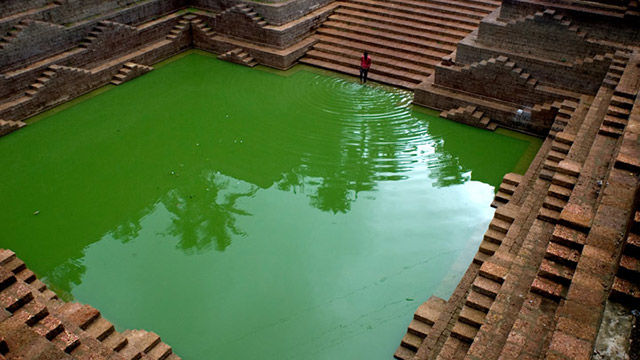
Peralassery Sri Subrahmanya Temple is a famous pilgrimage location about 14 km from Kannur. Lord Subrahmanya, the son of Lord Shiva, is the main deity worshiped at this temple. The chief offerings are eggs. Legend has it that this is a place Lord Rama and Lakshamana visited, during their quest to rescue Sita, on their way to Lanka. The massive temple pond and the annual Kodiyettam festival are the main attractions here.
h. Madayipara
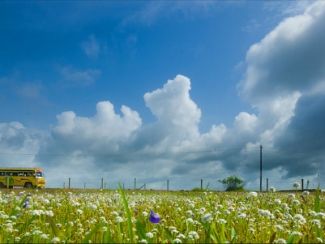
Madayipara is an extremely beautiful place which offers unique hues in each season. While the rain turns this place into a lush green blanket, the Summer brings with it the shades of the sun and Spring makes it a sea of blue.
Madayipara is an ecological paradise rich with wide species of flora and fauna. It has a rare collection of insect- eating plants. It is also home to hundreds of bird and butterfly species and a pond in the shape of a handheld mirror.
Wayanad
Wayanad is a rural district in Kerala state, southwest India. In the east, the Wayanad Wildlife Sanctuary is a lush, forested region with areas of high altitude, home to animals including Asiatic elephants, tigers, leopards and egrets. In the Ambukuthi Hills to the south, Edakkal Caves contain ancient petroglyphs, some dating back to the Neolithic age.
a. Edakkal Caves


A trip to Edakkal Caves is like a journey into our forgotten past, they have provided historians with great information regarding the lives and habits of our ancestors. The caves are two natural rock formations believed to have been formed by a large split in a huge rock. The carvings inside are extremely beautiful. A trek up the majestic Ambukuthi Hills is required to reach these caves. The aroma of coffee stays with you the entire way.
b. Banasura Sagar Dam


Banasura Sagar Dam, located in Kalpetta, is among the most visited destinations in Northern Kerala. Popular as the largest earthen dam in India and the second largest in Asia, it constraints the waters of the Karamanathodu, an offspring of the Kabini River. The dam was built with the aim of aiding the Kakkayam Hydroelectric Power Project and help with the irrigation and drinking water requirements of the people during summer.
Surrounded by beautiful greenery, there are numerous boating options as well. The rock formations in the area make for an interesting spectacle as well.
c. Kuruva Island
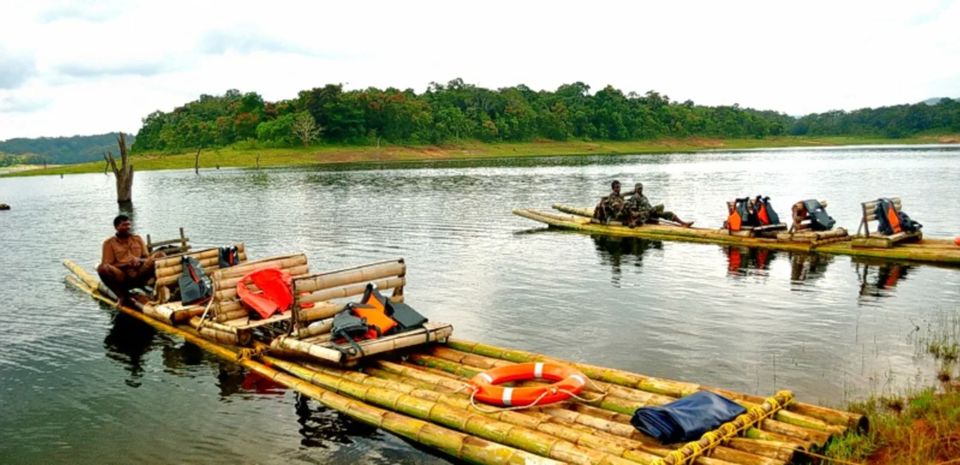
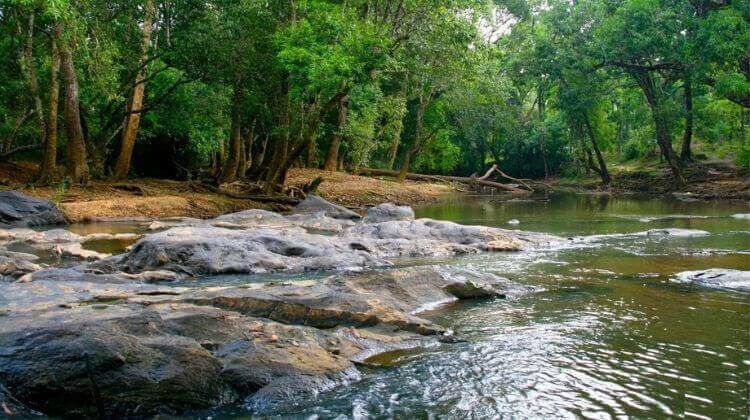
Located in the middle of Kabini river, Kuruva Island is a natural paradise. One of the most exciting things about Kuruva Island for tourists is their famous boat rides on bamboo rafts. Trekkers also visit Kuruva Island to explore the pristine environment and witness the most exotic species of plants, animals and birds here.
d. Neelimala View Point and Meenmutty Waterfalls


Neelimala View Point is a must visit for adventure lovers. It presents some amazing trails that cross the most picturesque landscape of Western Ghats. Tourists are in for a charming surprise as Neelimala View Point offers gushing streams and verdant valleys on the way up to the hill.
The beauty of this popular trekking and camping site is accentuated by the Meenmutti waterfall that brings out the most wonderful view of the place.

e. Bamboo Forests

These unique forests are known for preserving the most endangered flora and fauna and also constitute an integral part in the daily life of tribals who depend on the forests. These forests extend up to the Nilgiri Biosphere Reserve and a natural habitat for many animals like bison, cheetah, wild bears etc.
Bamboo Forest in Wayanad are protected by government authorities and known for collecting a grain called ‘bamboo rice’ that is used in many traditional food recipes in Wayanad.
f. Sulthan Bathery

Sulthan Bathery is the largest town in Wayanad district and is known for its tourism and commercial activities. It got its unique name after Tipu Sultan of Mysore occupied the region and used it as a battery (to store heavy ammunition) during the 18th century. It is situated on the Kozhikode - Kollegal National Highway and is the district's biggest business hub.
The drive here is brimming with vantage points that give a magnificent view of the valley below. People also love visiting the famous Jain Temple (built in the 13th century), Ganapati Temple and Mariyamman Temple. The Wayanad Heritage Museum is another popular location in these parts.
Kozhikode
Kozhikode is a coastal city in the south Indian state of Kerala. It was a significant spice trade center and is close to Kappad Beach, where Portuguese explorer Vasco da Gama landed in 1498.
a. Thikkoti Light House

The area near Thikkoti Lighthouse has Velliyamkally Rock on one side and scintillating blue sea on the other. It was built over a shipwreck, whose remains can still be seen here. Thikkoti Lighhouse is definitely one of the most fascinating remain from the ancient Kozhikode as the same was built on the remains of a shipwreck that crashed near the rocky shore of the Payyoli beach.
b. Kozhikode Beach

Kozhikode will always have a special place in the history of Kerala as it is here that Vasco-da-Gama first landed and the legendary Spice Route came into existence. This region still has a historic charm to it. Kozhikode Beach is the personification of the numerous characteristics that make Kozhikode so unique.
c. Mananchira Square

Mananchira Square is a beautiful park with lush green lawns, fascinating sculptures, Kerala-style buildings, an open-air theatre and a musical fountain in the heart of the city. The park is built around the man-made Mananchira Lake. The Kozhikode Public Library is located close to the park.
d. Beypore

Beypore beach is located 15 km away from Kadavu, at the jaws of Chaliyar River. You can indulge in Ayurvedic massages, adventurous water sports activities, or simply strolling along the shoreline.
e. Peruvannamuzhi Dam

Peruvannamuzhi is name of a scenic village in the Kozhikode District of Kerala. The magnificent Peruvannamuzhi Dam nearby the village pulls crowd who love to visit this place along with their families and friends to explore the exotic surroundings of the dam and to experience activities like rowboat, speedboat cruises, and many more. It gives them immense opportunities to travel around dense jungles, artificial lake, stunning landscapes, and lush green hillocks.
f. Thusharagiri Falls

Thusharagiri Waterfalls is one of the most majestic falls of Western Ghats. The name literally means ‘snowcapped mountains’ in the local language. The picturesque backdrop of the misty mountains and verdant plantations makes it an unforgettable sight.
g. Kakkayam Dam

Kakkayam is a stunning dam site in Kozhikode that is famous for its trekking trails and boating options. Boating rides here give one an exclusive view of the dam area along with a bunch of small waterfalls and dense forests. It makes for a perfect picnic spot.
h. Sargaalaya Kerala Arts

Sargaalaya, the Kerala Arts and Crafts village at Iringal in Kerala is an initiative of the Department of Tourism, Government of Kerala. It is an exclusive place where you can not only pick a product fashioned by the traditional artisans of Kerala but also learn one or two lessons in the subtleties of crafts-making. Conceptualized as a tourist destination, Sargaalaya was developed and implemented on the Responsible Tourism model. Sargaalaya also provides opportunity for the tourists to enjoy classical and folk art forms of Kerala according to their preference. The tourists can also enjoy boating in the Moorad River.
Malappuram
Malappuram in Kerala is a historical place of interest has a very rich and eventful history, and is situated on the Calicut - Madras road, 12 km. south - west of Manjeri and 52 km. south - west of Calicut. This historically significant district was the venue for many of the Mappilla revolts (uprisings against the British East India Company in Kerala) between 1792 and 1921.The hill country has also contributed much to the cultural heritage of Kerala.
a. Bharathapuzha River

The Bharathapuzha River is the second longest river in Kerala with a length of 209 kilometers and is known as the Nile of Kerala. The river originates in the Annamalai hills located in the Western Ghats region in Tamil Nadu. It flows in the west direction along with the many of its tributaries including the Tirur River through Palakkad Gap, Palakkad, Thrissur and Malappuram districts of Kerala.
b. Keralamkundu Waterfalls

Keralam Kundu Waterfalls are undoubtedly the best of all Malappuram Tourist Places, and that is why people keep flocking here to have an experience of the mystical. The water flows in from the forest of the western ghat and forms a pool of crystal clear water at the base of the falls. Also, it is believed that the water has many medicinal properties.
c. Kodikuthimala

Kodikuthimala is about 522 m above sea level, and is the highest point in the Amminikkadan hills. This is the spot where Britishers once hoisted their flag, the spot was opened for tourism only a few decades ago, with a large area of the place marked already for future development projects. There is a watch tower on the top of the hill from where tourists can get a panoramic view.
d. Biyyam Kayal

Biyyam Kayal is one of the most famous backwater lakes in Malapurram. The local councils have set up facilities of a number of adventure and water sports here, like Speedboats and water scooter rides. The kayal is visited highly by locals at the time of Onam.
e. Padinharekara Beach

One of the most amazing things to do in Malappuram is to experience a sunset from Padinharekara Beach. Located at the very end of the famous Tipu Sultan Road, you can also get mesmerized with the view of the rivers Bharathapuzha and Tirurpuzha before they merge with the Arabian Sea. You can find palm trees surrounding the white sandy beach, attracting tourists in large numbers.
f. Arimbra Hills
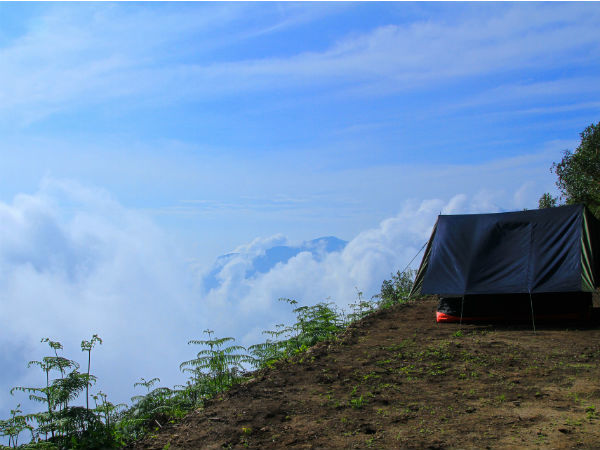
Arimbra Hills or Mini Ooty is one of the most scenic places to visit in Malappuram. Located at a height of about 1,050 feet above sea level, you can get a breathtaking view of the area around. On top of the hill, you can get to see a number of stone crushers, plantations, and a few Jain temples as well.
g. Adyanpara
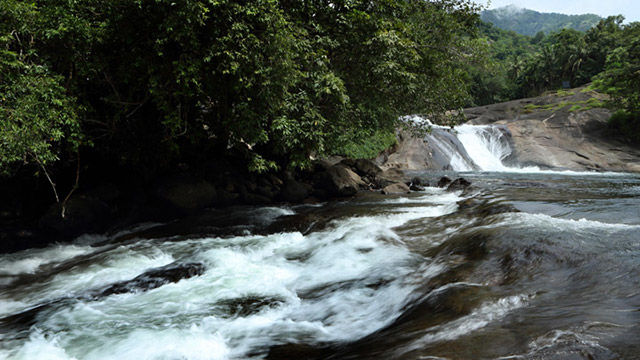
Located in the Kurumbalangode village of Nilambur taluk in Malappuram district, Adyanpara is famous for its waterfalls and the splendor of the wooded jungle surrounding it. Nestled in the land of perennial springs and lush green mountains, Adyanpara, attracts a wide variety of exotic as well as migratory birds regularly and is rich in wildlife. It is a charming and picturesque picnic spot amidst nature’s bounty.
Palakkad
The district of Palakkad known as the granary of Kerala, is a land of valleys, hillocks, rivers, forests, mountain streams, dams and irrigation projects. Situated at the foot of the Western Ghats , this is the gateway to Kerala from the north. Palakkad derives its name from the Malayalam words Pala ( Alsteria scholaris) and Kadu (forest).
a. Parambikulam Wildlife Sanctuary

Parambikulam Tiger Reserve and Wildlife Sanctuary, located in the Palakkad district of Kerala, is best known for its constant efforts to preserve the dwindling tiger population. Surrounding hills and river along with flora and fauna make it the perfect place for a trek and safari.
Endowed with peninsular vegetation and wildlife, this destination has minimum human interference. Some of the most prized animals found here include lion-tailed macaques, Bengal tigers, Indian leopards, wild boars, sloths, king cobra, Travancore kukri snake, and the Western Ghats flying lizard among others.

b. Palakkad Fort

The Palakkad Fort in Kerala is a beautiful historical monument that has gently integrated its high walls with its surrounding green gardens. One of the most well-preserved forts in the state of Kerala, the Palakkad fort was built in the 1766 AD by Hyder Ali and is now a protected monument under the Archaeological Survey of India. This picturesque fort is located in the heart of Palakkad town at the foothills of the Sahyadris range in a labyrinth of dense forests and crisscrossing cascading rivers. The fort is also known as the Tipu’s Fort, after the name of Tipu Sultan (son of Hyder Ali). The majestic fort depicts the old tales of bravery and courage.

c. Malampuzha Dam & Garden
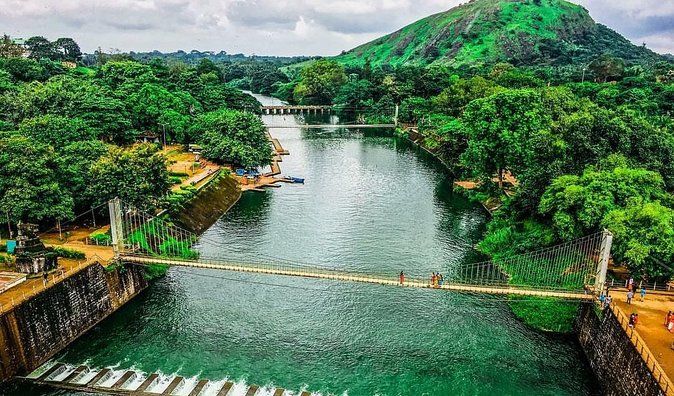
Malampuzha Gardens, the only rock-cut gardens in South India made by Nek Chand, the renowned artist and winner of the prestigious Padmashree Award, is situated in Palakkad district. Situated in the gardens is the massive Malampuzha Yakshi(female vampire) built in 1969 by Kanayi Kunhiraman, a greatly respected sculptor from the state. The flowering beds, fountains and rose gardens along with an aerial ropeway make it a place that instantly soothes your soul.
In the lower hills of the Western Ghats lies the beautiful Malampuzha township offers good trekking trails. Malampuzha Gardens and the Irrigation Dam tend to be the areas that attract the highest number of visitors.
d. Meenvallam Waterfalls
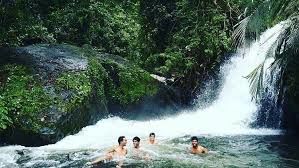

Meenvallam Waterfalls is a magnificent 5 step waterfall near Karimba town in Palakkad district of the Kerala state. Only two of the five steps of the falls are accessible.
This place is about 8 km from Thuppanad Junction on Palakkad-Mannarkkad route. Thuppanad Junction is connected by frequent buses from Palakkad. Private vehicles can be hired from here to the falls. About 2 Kms trekking is required to reach these falls which includes crossing Thuppanad River.
e. Silent Valley National Park

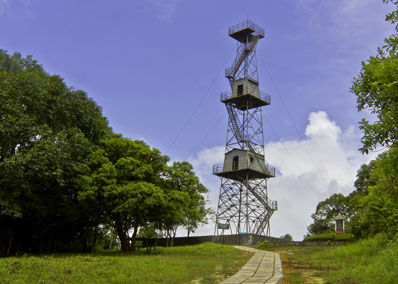
Located in the Northeast corner of Palakkad district, Silent Valley was named a National Park only in 1984. The Kunthippuzha River which feeds the entire forest was named after Kunthi, mother of the Pandavas. It is shielded by the Nilgiri Plateau to the North and the Mannarkkad Plains to the South. It constitutes the centrepiece of the Nilgiri Biosphere Reserve, an integral part of the Western Ghats, christened a World Heritage Site by UNESCO in 2012.
Silent Valley also has some interesting camping packages. Keerippara Camping - a two day package with trekking and overnight stay. Walk with the Master, another program offered here is a paid nature camp that gives a wide opportunity for nature lovers and students to meet and have a conversation with experts or masters who are experienced exponents in the field.
f. Nelliyampathy Hills


From the town of Nenmara in Palakkad district, the cloud-caressed peaks of the majestic Nelliyampathy Hill ranges are a sight to behold. The height of the hills ranges from approximately 467 m to 1572 m and it has an extremely calming effect on all who view it. To reach Nelliyampathy, one has to take the road starting from Nenmara that proceeds to the Pothundy Dam. There are about 10 hairpin bends that have to be negotiated on the way to Nelliyampathy.
The Pothundy Dam is a beautiful locale with facilities for boating and is a nice option as a picnic place. As the Ghat road winds its way up to Nelliyampathy, at certain places there are viewpoints from where the vast stretches of Palakkad district are visible with its extensive paddy fields forming a verdant carpet. It also offers a splendid view of the Palakkad Gap, which is a geographical phenomenon in the Western Ghats formation in this region, bringing into view, parts of the adjoining State of Tamil Nadu.
Palagapandy is Seetharkundu where one can have a fantastic view of the valley and a 100 m high waterfall providing an added attraction. From Palagapandy, one can trek or go by jeep to reach Mampara; another breathtaking vantage point at Nelliyampathy. The area in and around Palagapandy Estate has tea, cardamom and coffee plantations with adjoining hills allowing one to catch a glimpse of the wildlife in the form of Indian Gaur, elephants, leopards, Giant Squirrel etc. and is also a paradise for birdwatchers.
Thrissur
The cultural capital of Kerala, the Poorams or temple festivals in Thrissur draw in thousands of people every single year as these carnivals encapsulate every single part of Kerala's rich heritage. These are a hotbed of folk art performances and heritage tours that will give you an in depth look into some of the grandest traditions of the State. From majestic elephants to colourful pulikali processions to the world renowned Thrissur Pooram, there is always a festive atmosphere in the air. The district is also the abode of several cultural centres like Kerala Kalamandalam, Sahitya Academy and the Sangeetha Nataka Academy. Thrissur is a place one must visit at least once in their lifetime. The people, swaying with the beats of the chenda, shall help you understand the true heart and spirit of Kerala.
a. Punnathur Kotta
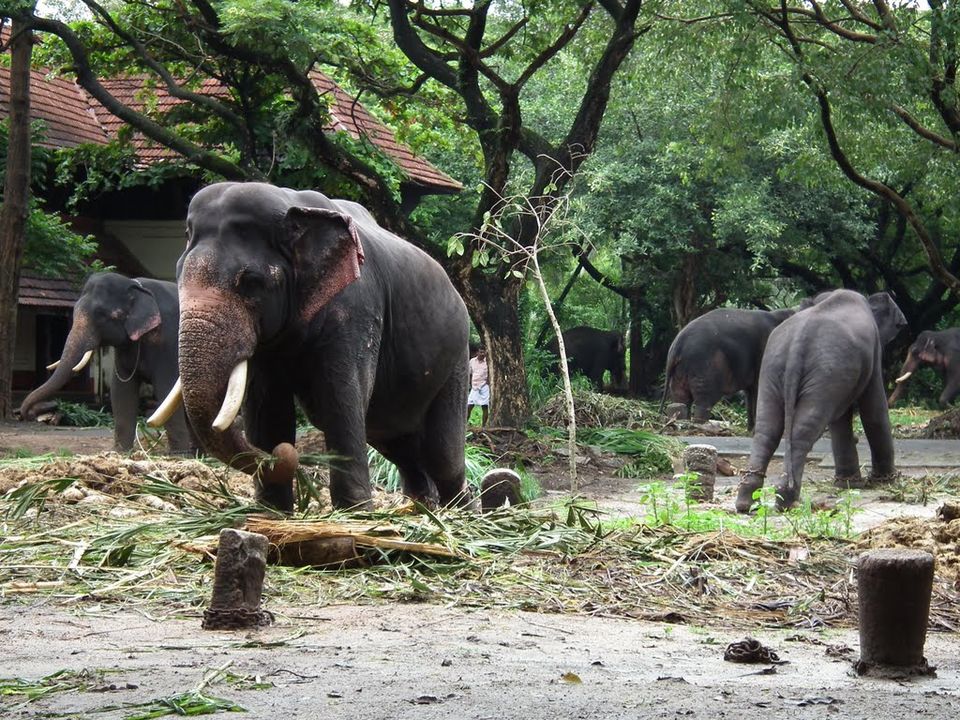
Punnathurkotta is a fort which was the former palace situated at Kottapadi, 3km away from the prominent Guruvayur Sri Krishna Temple in Thrissur district of Kerala. It is the most renowned and biggest elephant sanctuary in Kerala which attracts a lot of tourists each day.
The Punnathurkotta was the palace of a local ruler once. But now the palace grounds are widely used for housing the elephants owned by Guruvayur Devaswom of Guruvayur Sri Krishna temple and hence named as ‘Anakotta’-the elephant fort. This place is also used to tame and train the elephants to participate in famous festivals that occur throughout the year and also to serve the Lord Guruvayurappan. The Punnathurkotta palace is structured with a naalu kettu- the rectangular shaped home with a central courtyard and the palace belonged to the Punnathur Raja. It is poorly maintained and they are now a training centre for Mahouts. The complex of Punnathurkotta also includes a temple of Lord Shiva and Bhagavathy.
b. Athirappilly, Vazhachal & Charpa Waterfalls


Athirappilly Falls do not require any introduction since it is featured in a lot of Bollywood movies. It is situated in Athirappilly Panchayat in Chalakudy Taluk of Thrissur District in Kerala, India on the Chalakudy River, which originates from the upper reaches of the Western Ghats at the entrance to the Sholayar ranges. It is the largest waterfall in Kerala, which stands tall at 80 feet. Just a short drive from Athirappilly to the Vazhachal falls, which is close to dense green forests that are home to many endangered and endemic species of flora and fauna.
There is another waterfall on the way from Athirappilly to Vazhachal Falls, in close proximity to the road, which is locally called "Charpa Falls". Athirappilly Falls is the largest waterfall in Kerala and is nicknamed "The Niagara of India".
c. Chavakkad Beach
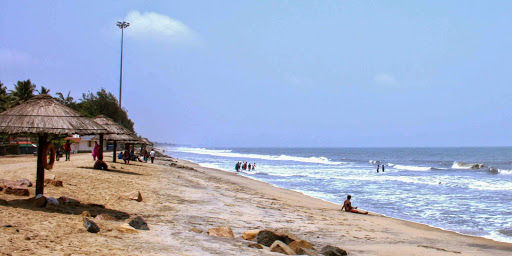
Chavakkad Beach in Thrissur is famous for the Azhimukam, the confluence of the river and sea. Visitors throng here to observe this delightful phenomenon. It is a great place to swim and relax in a serene environment. The nearby lighthouse attracts frequent visitors as well. On the other side of the beach is Ramachapadam, a vast farmland of the Ayurvedic herb, Ramacham. The fish market available in the evening sees a huge crowd every day. It is among the best picnic spots in Thrissur.
d. Dolours Basilica

Our Lady of Dolours Basilica, known as Puthen Pally, has the distinction of being the biggest church in India with a tower, said to be third tallest in Asia. It has an area of 25,000 sq. ft., and is 261 ft. tall. It is adjacent to the Martha Marian church.
Construction of the church in the Gothic style, that began in1929, was completed after 11 years. As many as 30,000 people can be accommodated in the church at a time. Other than the main altar, the church has five small altars. The Bible Tower with murals that depict various phases of Christ’s life is a unique feature. The bell tower has eight bells imported from Germany. The Feast of St. Mary, which falls in September, is the main event of the year. This is the most famous Marian pilgrim centre in Thrissur.
e. Guruvayur Sree Krishna Temple


Guruvayur is home to the historic Sree Krishna Temple, called the Dwaraka of the South. It is among the most revered and popular pilgrimage destinations in Kerala and the entire country. The central shrine is believed to have been rebuilt in 1638 C.E. The architectural style and individual elements inside the shrine are beautiful representations of the history of the place.
f. Cheppara
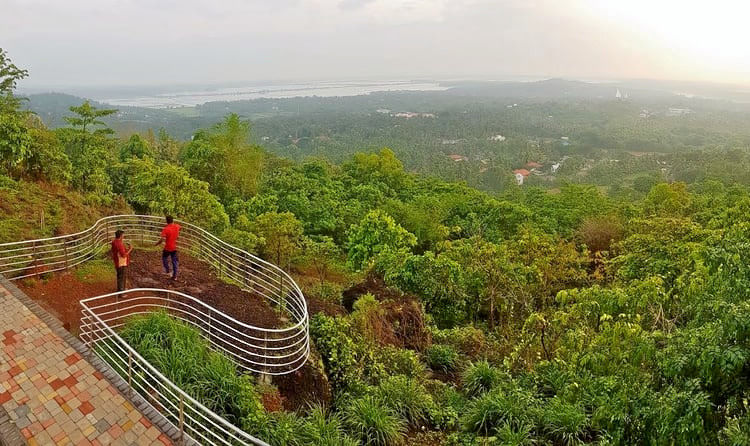
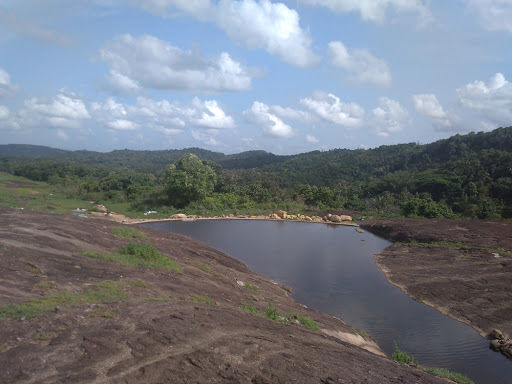
A beautiful viewpoint at just an hour’s drive from the city, Cheppara is probably the least known of all of Thrissur Tourist Places. The word ‘Para’ means hill, and that is exactly what this place is.
Spread in an area of about 1 km, visitors claim that the views from the top of the hill are magnetic and captivating, and because it is less known, one can expect the least amount of crowd at any given time. The highlight of this spot, however, is the amazing view of the sunset.
Ernakulam
Ernakulam district is a dynamic location with luxurious shopping malls, myriad restaurants and majestic skyscrapers, with the metropolis of Kochi at its heart. Ernakulam is considered to be the urban face of God's Own Country and is the cultural, political, commercial and industrial hub of Kerala.
a. Fort Kochi


The commercial capital of Kerala and the most cosmopolitan of Kerala’s cities, Cochin(Kochi as it is called today) is a fascinating blend of cultures. From time immemorial, it has been the favourite destincation of globe-trotters and explorers. Blessed by on the finest natural harbours in the world, Cochin has been eulogised as the Queen of the Arabian Sea. Around Cochin are several places of monumental value, but step into Fort Kochi, and you are in a totally different world. The Chinese fishing nets, the Jewish Synagogue, the Dutch Palace, the Portuguese and British Architecture, all finely blend with the rich heritage of the land, intricately woven folklore and fact.
If you are looking for a laid-back town away from the city that has more foreign tourists than Indians, then Fort Kochi is a good start. Throw in a bunch of cosy cafes and you won’t even miss city life. And if you are a true blooded traveller with the intent to explore, Fort Kochi’s growing cultural scenario, historic churches, innumerable homestays are sure to provide you with a holistic experience.
b. Marine Drive

Marine Drive is the most happening place in the heart of Kochi. The picturesque area, built facing the backwaters, is the main hangout place for people inside and outside Kochi. Whoever visits for sightseeing in Cochin, never leaves the town without paying a visit to the Marine Drive. The magnificently built Marine Drive that is 3 kilometer long walkway on the shore of Vembannattu Kayal would surely offer a pleasant experience to its visitors. Not only the walkways, there are also many shopping malls and eateries near Marine Drive to hang out.
c. Paradesi Synagogue

Built in 1568,this synagogue attracts numerous visitors to this day. It adds to the area's quaint charm and is a great symbol of the love and harmony that exists in the community.
One step into its divine halls leaves a person enthralled with the rare antiques on display. The chandeliers and lamps sparkle alongside the natural sunlight that flows in through its large windows. These glass chandeliers date back to the 19th century when they were imported from Belgium. The hand-painted blue willow patterned tiles are architectural marvels in themselves. They were brought here from Canton in China by Jewish businessman Ezekiel Rahabi in the 18th century. Each tile is unique and one feels a distinct mystical aura emanating from the entire place.
d. Willingdon Island Boat Jetty

The ferry jetty at Mattancherry side of Willingdon Island is set to get a brand new makeover with the Cochin Port Trust planning to make it as a centre for boat tourism. The proposed centre is expected to decongest the existing boat tourism activities that are being operated from Ernakulam foreshore.
e. Kumbalangi Island Tourism


Kumbalangi Integrated Tourism Village Project is a unique initiative to transform the tiny island of Kumbalangi into a model fishing village and tourism spot. It is the first of its kind in India and is located in Kochi. It is blessed with many natural wonders and the people who visits are treated to many a rare treat. Kumbalangi is surrounded by backwaters. Chinese Fishing Nets cover the island and the village boasts of rich aquatic life. An array of mangroves separate land from water and provide for a good breeding ground for prawns, crabs, oysters and small fish.
Kalagramam is an artist’s village that displays fishing equipment and handicrafts. Bait-fishing is extremely popular among tourists here. Many houses in the village are homestays and visitors can book their stay directly with homestay operators.
f. Puthuvype Beach

One of the less visited but yet very beautiful beach is the Puthuvype beach. This beach has not been developed for tourism and the local administration is making a lot of efforts to promote this place as an alternative to Cherai Beach, being a suburb of the city of Kochi. A lighthouse is also situated here. The light house is situated less than half a kilometer away from the beach. This lighthouse is one of the tallest in India. There is a shallow ditch to the north of the Beach. Entry to the light house is permitted from 3 P.M to 5 P.M.
g. St.Basilica's Cathedral

The Santa Cruz Cathedral Basilica in Fort Kochi is one of the eight Basilicas in India. This heritage edifice of Kerala is also one of the finest and imposing churches in India. Located close to the renowned St. Francis Church, this basilica serves as the cathedral church of the Diocese of Cochin, the second oldest Diocese of India. The history of Santa Cruz Cathedral Basilica dates back to the sixteenth century and begins with the arrival of Portuguese missionaries in 1500 CE.
Idukki
Idukki is the second largest place in Kerala where the most number of scheduled tribes exist. There are 245 tribal settlements in the district of which 74 are in Thodupuzha; 11 in Peermedu; 126 in Devikulam and 34 in Udumbanchola taluks. Almost all the scheduled tribes are living in the extreme remote hilly banks and in the deep interiors of thickly growing forests of this district. In earlier days a large scale of migration happened from other parts of Kerala and from the neighboring Tamilnadu, to the district. That is the reason why Idukki is having a mixed culture.
a. Idukku Wildlife Sanctuary

Located about 450-750 m above sea level, the sanctuary is cradled by the Cheruthoni and Periyar Rivers. The beautiful lake surrounding the sanctuary is perfect for romantic boat rides. The tropical evergreen and deciduous trees add to the charm of the place. The sanctuary lies adjacent to the world famous Idukki Arch Dam.
b. Idukki Arch Dam

Idukki Arch Dam, the second in the world and first of its kind in all of Asia. The sight itself is awe-inspiring, considering the sheer magnitude of the structure and the purpose it serves. Nearby lies the Idukki Wildlife Sanctuary where one can seek solace in nature.
c. Keezharkuthu Falls

To see a rainbow gushing forth from over 1500 m is not something you get to view every day. This is among the many reasons that people visit the gorgeous Keezharkuthu Waterfalls in Idukki. This natural phenomenon can be observed throughout the year. It is naturally endowed with rock formations that make it ideal for a number of enthralling activities that include rock climbing, mountaineering, camping and trekking.
d. Sita Devi Lake
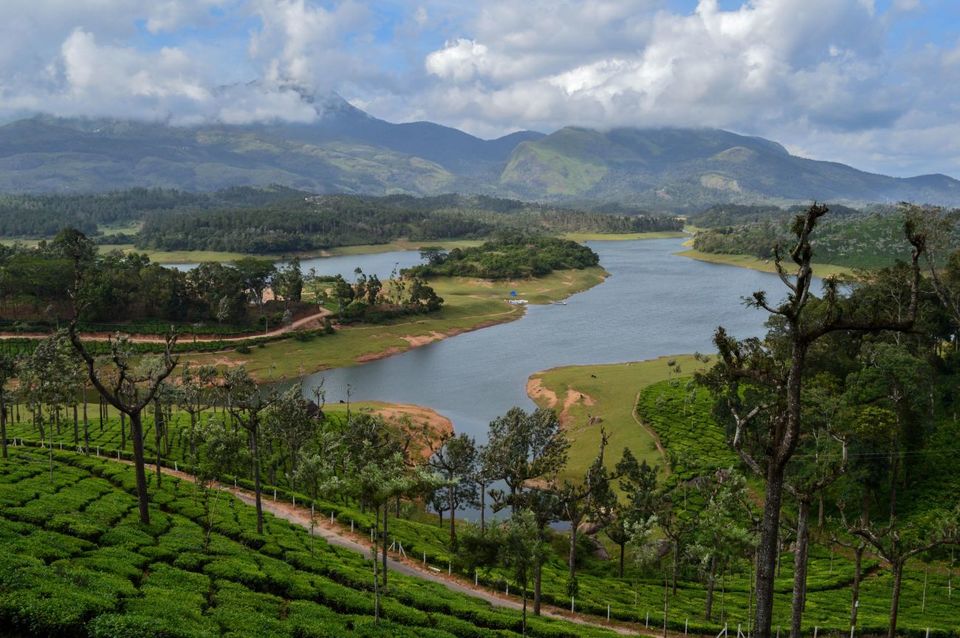
Seetha Devi Lake Munnar near Devikulam hill station is an unpolluted lake surrounded by tea plantations and green grass lawns and with the mountains, blue sky and the cool breeze make it a perfect picnic spot. Walking through the mountain trail to the lake is really adventurous and exciting. Fully inside of the jungle, one lake is an awesome experience. Unspoilt natural beauty of the place just takes your breath away.
Seetha Devi Lake Munnar offers rejuvenating springs of mineral water and is also a favourite picnic spot among tourists. Besides the expansive tea plantations, a spice garden run by the district tourism promotion council nurtures a wide variety of spices. The idyllic hill station with its velvet lawns, exotic flora and fauna and the cool mountain air offers a rare.
e. Munnar
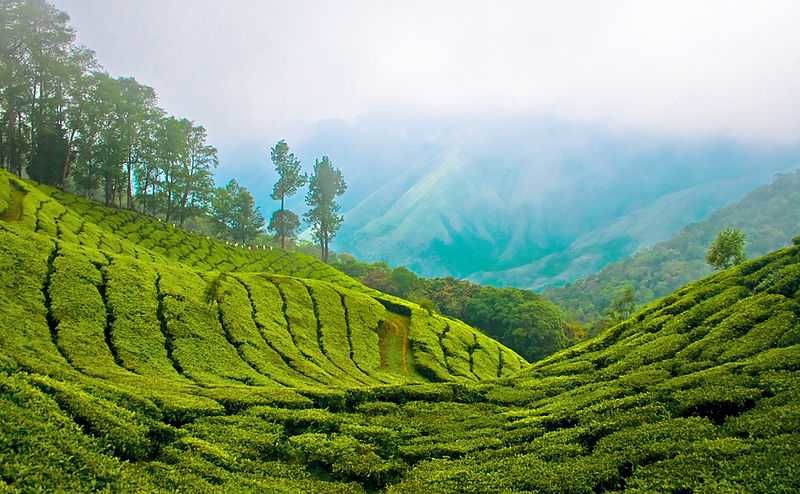
One of the most sought after honeymoon destinations in Kerala, Munnar is replete with resorts and logding facilities that fit a wide rage of budgets. Sprawling tea plantations, picturesque towns, winding lanes and holiday facilities make this a popular resort town. Among the exotic flora found in the forests and grasslands here is the Neelakurinji. This flower which bathes the hills in blue once in every twelve years, will bloom next in 2030. Munnar also has the highest peak in South India, Anamudi, which towers over 2,695 m.
f. Thekkady
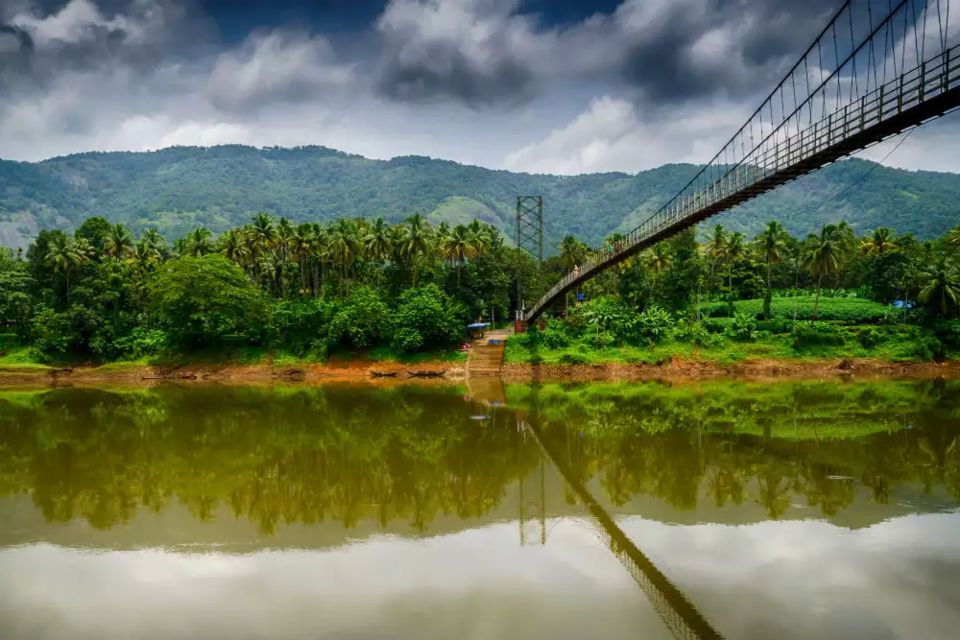
Thekkady is considered a haven for natural spices such as black pepper, cardamom, cinnamon, nutmeg, nutmace, ginger, and clove.
g. Nedumkandam Hills

Nedumkandam Hill, one of the Idukki tourist places, is located at 3200 ft above the sea level at the taluk headquarters of Nedumkandam in Idukki district. The place is popularly known as the land of spices produces coffee, cardamom, and pepper.
The Hill offers a panoramic view of the countryside with cloud-covered mountains, lush green rolling hills, plantations of cardamom and pepper, and pristine air. The other tourist spots in the proximity are Kailasapara, Kallumekallu, Neyyandimala, Ramakkalamedu, Thooval falls etc.
h. Periyar National Park

Periyar National Park & Wildlife Sanctuary, locating in Thekkady is the perfect example of nature's bounty with great scenic beauty and rich biodiversity. In this astounding location of Kerala, the Periyar National Park is considered as the most protected area for the elephants and the tigers. One of the most renowned national parks in South India, the Periyar National Park is set high at the Western Ghat ranges. The protected area is widespread along the area of 925 sq km (357 sq mi). The rest of 350 sq km (140 sq mi) of the core zone was declared as the Periyar National Park in the year 1982.
i. Mattupetti Dam

Mattupetty is among the most visited destinations in the tourist hotbed of Munnar. It is a beautiful picnic spot that regularly attracts visitors. People love visiting the dam and lake here and families can regularly be seen enjoying a fine afternoon in the area. The view of the valley from here is breath-taking and one gets to simply relax and enjoy the beautiful weather.
j. Vagamon

Pristine and still untouched by the outer world, Vagamon is among the most magnificent hill stations in Kerala! Located on the Kottayam-Idukki border, this alluring hilly retreat is perched at an astounding height of 1,100m above the sea level and is a hotspot for the adrenaline junkies on a Kerala trip.
Owing to the astounding height and the enchanting beauty of Vagamon, it has become one of the most sought after paragliding destinations in Kerala. Adrenaline seekers from all over the country throng this pictorial hill station to showcase their paragliding skills and enjoy the pristine beauty of Vagamon.
Kottayam
Kottayam district is famous for its rich heritage and literary tradition. It is renowned for its spice and rubber trade. Cradled by the backwaters and the Western Ghats, it is epitomised by its stretches of vast greenery, paddy fields and huge rubber plantations. Over five of the State’s leading newspaper publications originate from Kottayam. About four-fifth of books published in the State come from here as well. From trekking hotbeds like Nadukani and Kottathavalam to the rare avian life on display at the Kumarakom Bird Sanctuary, this district encompasses everything that God’s Own Country is famous for. Well connected to the entire State, it is full of interesting historical and cultural locations that tell the tale of how the district was forged into its current form.
a. Kumarakom
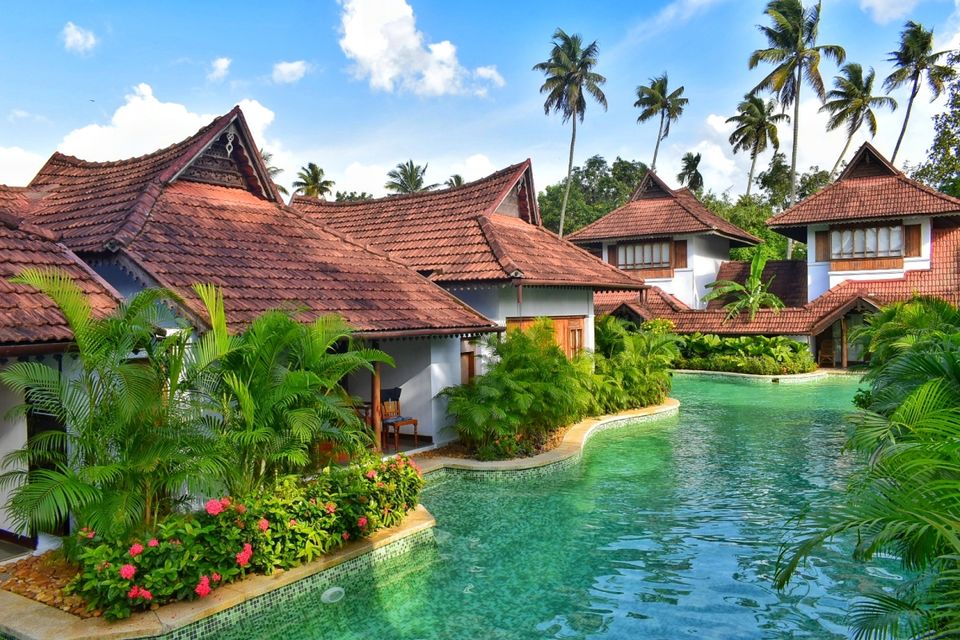

The village of Kumarakom is a cluster of little islands on the Vembanad Lake, and is part of the Kuttanad region. The bird sanctuary here, which is spread across 14 acres is a favourite haunt of migratory birds and an ornithologist's paradise. Egrets, Darters, Herons, Teals, Waterfowls, Cuckoo, Wild Duck and migratory birds like the Siberian Stork visit here in flocks and fascinate all visitors.
An enchanting backwater destination, Kumarakom offers visitors many other leisure options. Boating and fishing facilities are available at the Taj Garden Retreat, a sprawling old bungalow-turned-resort.
b. Ilaveezha Poonchira

Known as the land of letters, latex and lakes, Kottayam is among the most prominent districts in Kerala. Here lies the beautiful valley of Ilaveezhapoonchira, one amongst the many prime picnicking spots in the area. The beautiful hillocks near Kanjar are known to have great trails for trekking. The view in itself is breath-taking. During the Monsoons, the entire place transforms into a surreal spectacle. The terrain changes and one observes Nature at her best. It is highly recommended to view both sunrise and sunset from the valley as the picturesque landscape opens up in a unique and exhilarating way at those specific times.
c. Marmala Waterfalls

The Marmala waterfalls, a few kilometres away from Erattupetta, is one such and lucky explorers may find it concealed in a thick maze of trees and groves, but only committed explorers can enjoy this natural beauty. While the road to Vagamon, a popular hill-station near Kottayam, is too trodden by tourists, this grand 60 meter waterfall gets limited number of visitors. It is not easy to reach there as it involves inevitable trekking of 2 kms.
d. Vaikom
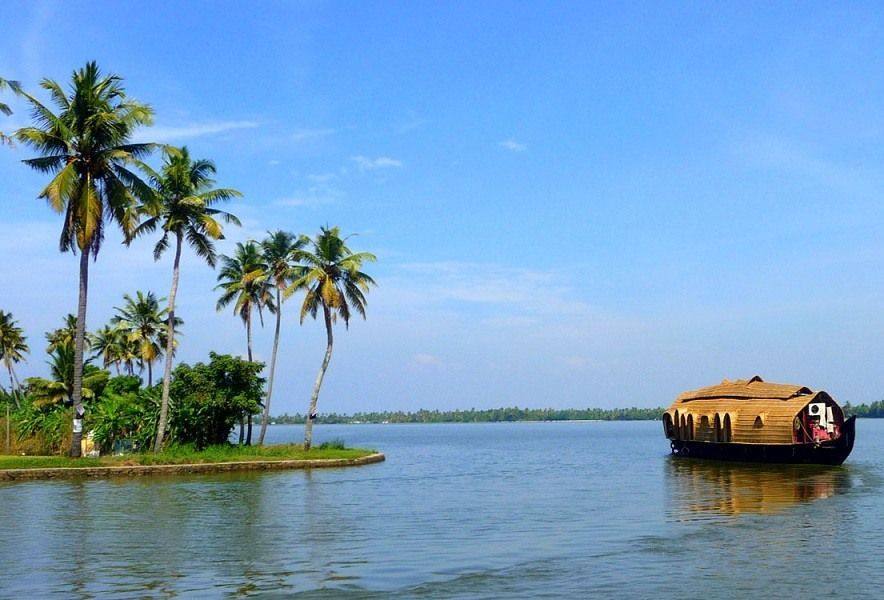
Surrounded by the Vembanad Lake, Vaikom embraces travellers with its beautiful water bodies and serene village life. The emerald Murinjapuzha Backwaters and green carpeted nature allures the traveller in you to Vaikom. Besides this, the majestic Vaikom Mahadeva Temple enhances the exquisiteness of the place. Vaikom, located in Kottayam district allures tourists with its rich natural beauty and spiritual significance.
e. Kottathavalam
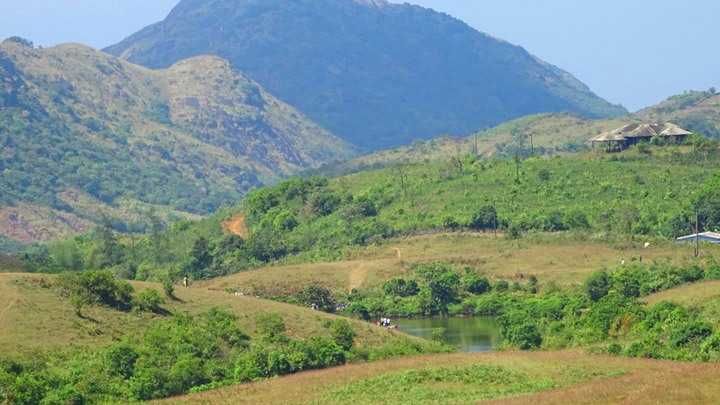
One of the most loved picnic spots in Kottayam, Kottathavalam is a place of archaeological interest at the legends says that the Royal Family of Madurai would ascend a rock cut path to take rest in this ancient cave. A magnificent cave which can be reached by the rock cut steps near the Muruganmala is perfectly interspersed with a naturally green cover that spreads out in all directions. Inside it, people can look at chair shaped carvings, along with depictions of famous legends including Madurai Meenakshi, Ayyappa, Murugan and Kannaki.
Alappuzha
Washed by the silvery waves of the Arabian Sea, the Venice of the East welcomes you to the backwaters of kerala. The Palm fringed canals and shores bustling with glimpses from the day to day life in the country side, the mirror still lagoons, picture book lakesides and its long sandy beach has blessed , the water locked district, to become one of the best Backwater tourism destinations in God's Own Country. The large network of canals provides Alappuzha its lifeline. Water carnivals using the gigantic snake boats and the country canoes of varying sizes have an important role in the community life of the people of the district.
a. Kuttanad Backwaters

Believe it or not, but every time you visit the Kuttanad region of God’s Own Country, you will find something new to revel in and cherish! A home to four of the most important rivers in God’s Own Country – Pampa, Meenachil, Achankovil, and Manimala rivers, this part of Kerala is truly a divine place for the backwaters lovers on a Kerala trip.
Nestled amidst thick and lush greeneries, the ‘Rice Bowl of India’ or Kuttanad serves as an ideal backwater destination in Kerala. While the appealing settings and locales of this regions makes it a pictorial destination for the visitors, the backwaters across this part of Kerala keeps the visitors engrossed with never-ending fun and frolic.
b. Alleppey Beach and Lighthouse

Alleppey is one of the most stunning backwater destinations in Kerala, and almost everyone is aware of this fact! But what most of the visitors tend to ignore is that this quaint backwater destination is also the home to one of the most gorgeous and stunning beaches in Kerala.
c. Marari Beach

Nestled in the Alappuzha District of Kerala, Marari Beach is a perfect location for holidaying with family or friends. This beach in Kerala is eternal with coconut palm trees and golden sands. The beach is quite beautiful and the name 'Marari' arises from 'Mararikulum', which is a local village on the Arabian Sea Coast. The serenity and tranquility of this beach take beach lovers backwards in time. The indolent pace of local life makes vacationing near the Marari beach a reviving experience.
d. Vembanad Lake & Pathiramanal

Pathiramanal is a bird watcher’s paradise. It is about 1.5 km from Muhamma Boat Jetty and about 13 km from Alappuzha. This small island on the backwaters is a safe haven for hundreds of rare migrating birds. A 1.5 hour motor boat ride or a 30 minute speedboat trip from Alappuzha gets you here. Surrounded by the Vembanad Lake, stretching from Alappuzha to Kochi and the Kayamkulam Lake, Pathiramanal is accessible only by boat. It is an ideal pit stop in the middle of a houseboat ride.
Vembanad Kayal is the longest lake in India,and the largest lake in the state of Kerala. Spanning several districts in the state of Kerala, it is known as Vembanadu Lake in Alappuzha, Punnamada Lake in Kuttanad and Kochi Lake in Kochi. Several groups of small islands including Vypin, Mulavukad, Vallarpadam, Willingdon Island are located in the Kochi Lake portion. Kochi Port is built around the Willingdon Island and the Vallarpadam island. The Nehru Trophy Boat Race is conducted in a portion of the lake.
e. Kayamkulam Lake

Kayamkulam Lake derives its name from the town of Kayamkulam through which it flows. This is a site known since antiquity as an ancient maritime trade center. The glory of the pivotal position Kayamkulam enjoys, is extended to the backwaters in this part of Alleppey. It forms a well-regulated and well-maintained channel for transport and trade. In fact the Kayamkulam Lake, connecting Kollam and Alleppey is Kerala's longest backwater tourism route.
f. Punnapra Beach

Punnapra Beach is a serene getaway famous for its golden stretch of sand and pristine waters. It is an isolated beach and doesn’t have a lot of visitors. It is, therefore, preferred for tourists looking for a romantic holiday away from the chaotic city life. Ayurvedic massages on the beach are quite famous here, making it a good place to replenish one’s mind and body.
g. Thottappally Beach

Thottapally Beach is one of its own kinds in the whole world. This is one of those beaches that have black sands owing to high content of Zircon. The unique texture of the sands, the lovely backdrop of palms, amazing sunsets, clean and pristine environment and an ethereal feeling is what all visitors will be offered at the beach. It is situated just close to the national highway – 47 and between Alappuzha and Thiruvananthapuram. It is also the drain out way of Kuttanad to the Arabian Sea. Every year, it attracts a large number of domestic and international tourists.
Pathanamthitta
Pathanamthitta was formerly under the rule of a Pandalam king which had links with the Pandya kingdom. It derives its name from two words - Pathanam and Thitta. The meanings of the words are a cluster of houses by the river side. A large variety of vegetables and spices are cultivated in the fertile lands of this land locked district. There are a large number of rubber plantations as well. A Tour to Pathanamthitta is sure going to be a visual treat because of its scenic beauty.
a. Perunthenaruvi Waterfall

Perunthenaruvi allures tourists with its breathtakingly beautiful waterfalls and the dazzling stream that flows to merge with the sacred Pamba River. The locality is the home turf of beehives which have bestowed the place with the title Perunthenaruvi meaning the “River of Honey”.
b. Thriveni Sangamam

Situated on the way to Sabarimala, the Thriveni Sanganam as the name suggests is the point where the Holy Pamba River meets with the Manimala River in its north and with the Achankovil River in the south. The devotees stop here to take a dip in the holy water to wash away their sins. Millions of visitors also come here to enjoy the beautiful landscape of the place. The Pamba River, also known as the Dakshina Ganga or the Ganges of South India, is the third longest river in the southern part of the country which begins flowing from the Western Ghats. Devotees believe that it was near this holy river that King Rajasekara gained a vision of Lord Ayappa.
c. Aranmula
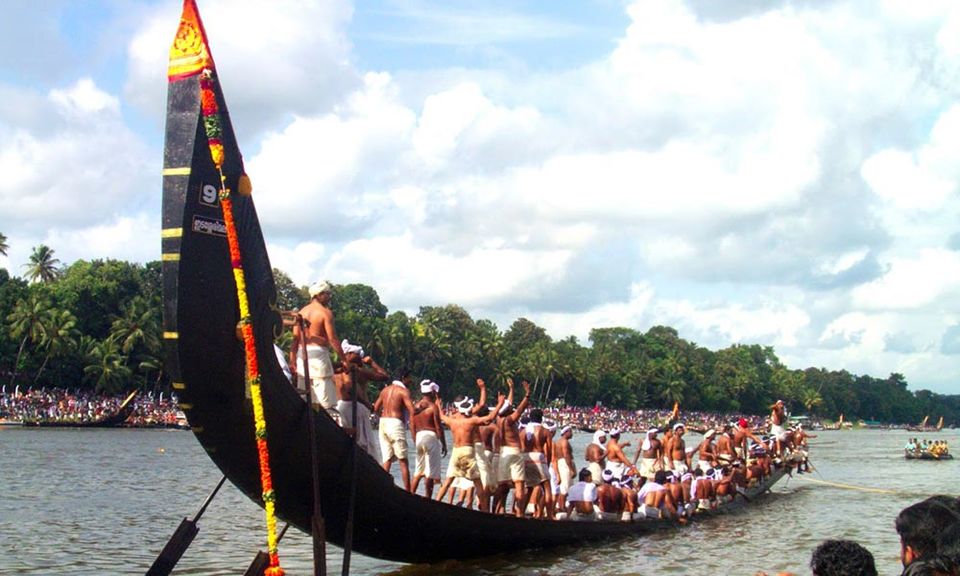
Visitors to Pathanamthitta district are never really sure of what to expect from Aranmula. This is mostly due to the lore surrounding this exotic village, famous for the genius of its craftsmen and the ancient vibe one experiences. It gets its name from the centuries-old Aranmula Parthasarathy Temple (dedicated to Sree Krishna) on the banks of the holy River Pamba, a virtual hotbed of devotees. The murals, carvings and paintings here have inspired much awe and interest.
d. Sabarimala
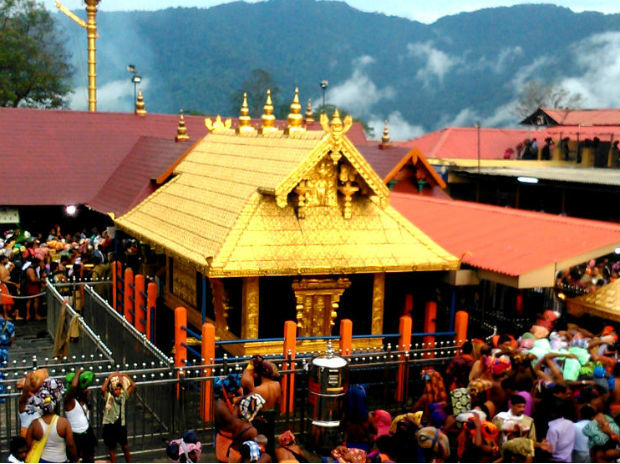
he Lord Ayyappa Temple of Sabarimala, located in a forest in Pathanamthitta, is a hill shrine. The temple is situated on a hilltop at an altitude of 468 m (1535 ft) above sea level and is surrounded by mountains and dense forests. Vehicles going to Sabarimala are allowed only up to Pamba which is at a 5 kilometer distance from the temple. From here, visitors have to proceed by foot. The temple is open during the pilgrim season known as mandala kaalam which falls approximately between 14th November to 27th December every year, and makaravilakku which falls in mid January each year. During this time it is estimated that about 45-50 million devotees visit the shrine of Ayyappa. The temple is also open for a few additional days every month.
e. Kakki Reservoir
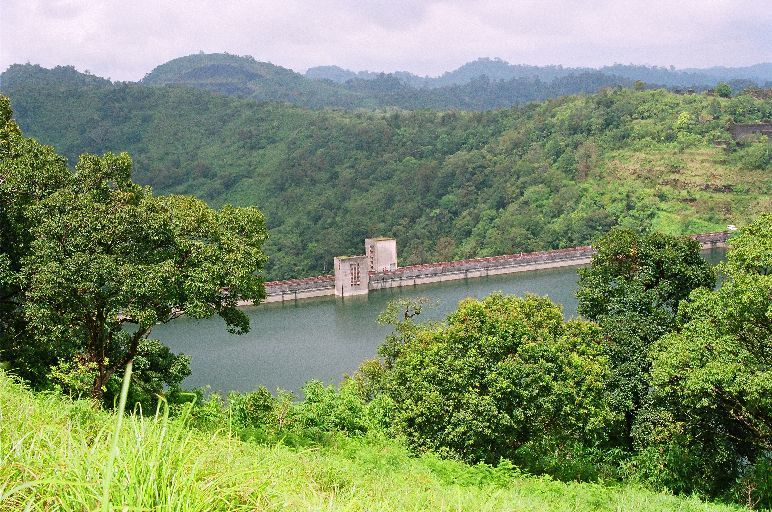
Kakki reservoir is one of the place in Kerala where tigers, elephants and monkeys can be sighted in the forest surrounding the reservoir. The magnificent artificial lake provides an enchanting boating experience.
f. Orakkampara Waterfalls

Orakkampara Waterfalls is a charming waterfall situated close Kottangal around 2 Kms in Mallappally Taluk. It is situated at a separation of 29 Kms from Pathanamthitta. This is an unexplored waterfall situated in thick woods. This little waterfall is a pleasant place to spend couple of hours. This waterfall is minimal near the street from Kottangal towards SH8 Kozhencherry - Erattupetta.
Kollam
Kollam, also known as Quilon or Desinganadu, is the place which takes the credit for being the hub of the countrys cashew trading and processing industry. Affording an impeccable blend of scenic surrounding, tradition and hospitality, Kollam is often referred to as the dreamland of Kerala. Kollam is considered as one of the oldest ports on the Malabar Coast and has long been drawing the attraction of international countries.
a. Ashtamudi Lake

The 8 arms or channels of the Ashtamudi Lake are what gave it its name. It is the entrance to the famous backwaters of Kerala and the houseboat rides here are extremely famous. The Kollam to Alappuzha route is considered among the best in the backwaters. Cruises here give you a deeper look at the heart and spirit of the backwaters. Let the local oarsmen take you on a special journey to rediscover your soul. The lush greenery and exotic biodiversity shall enchant you forever.
b. Palaruvi Waterfalls

Palaruvi Waterfalls, which literally translates to ‘Stream of Milk’, comes down through rocks from a height of 300 feet. This has turned into a delightful picnic spot where one can enjoy a spectacular view uninterrupted. The rocky terrain one has to traverse before reaching it can be cumbersome but once these majestic waterfalls come into sight, any kind of fatigue disappears immediately. The cool water is frequented by those seeking a refreshing dip and it regularly attracts people in large numbers.
c. Jatayu Earth Centre

You will certainly get mesmerised with Kollam’s latest tourist attraction, the Jatayu Earth’s Center that hosts the world’s largest bird sculpture. Spanning over 65 acres across four hills, this is the State’s first ever BOT (Build-Operate-Transfer) tourism. All adventure junkies, this is your perfect weekend getaway! Engage in adventurous games in the backdrop of breathtaking views of nature. Whether it be Burma bridges, commando nets, log walk, vertical ladder, chimney climbing or side joola, choose your pick and let the adrenaline rush through the body.
d. Thirumullavaram Beach

Thirumullavaram Beach is located 6 km north of Kollam in the state of Kerala. It is a secluded beach and a beautiful picnic centre. About one and a half kilometre into the sea is the Nyarazhcha Para, literally Sunday Rock, that can be seen from the shore at low tide. And near the beach is a Mahavishnu Temple.
e. Kollam Beach

An array of beach activities attracts huge flocks of tourists throughout the year to thepristine Kollam Beach. The panoramic visuals of the Arabian Sea are enchanting. A port city and one time bustling harbour for Chinese ships and trade, Kollam Beach is home to Chinese fishing nets, Chinese water pots and sampan-like boats even to this day. Go over for a cultural and spiritual joyride that shall stay with you forever.
f. Thangassery Beach and Lighthouse\

The Thangassery Beach is one of the fascinating beaches in the entire region of Kollam and is constructed in the shape of an Old Portuguese Fort. The lighthouse is located on this scenic beach and has been declared by many to be the most attractive point of this place. Even though a lift was set up in this place for the ease of the visitors, some people still choose to climb up 195 spiralling steps to reach the top. Visitors love to climb up the lighthouse late in the evening to have a panoramic view of the surrounding areas, and to soak in the beauty of nature. Other than the enchanting scenes all around, one can also view a magnificent fort which was built by the Dutch and the Portuguese, and is now in ruins.
g. Paravur Lake

Paravur Lake or better known as Paravur Kayal is a popular lake in Kollam, Kerala. The lake is comparatively small and is one of the smaller lakes in the state. It is the end part of Ithikkara River and is also fed by the waters of the river.
Thiruvananthapuram
Located in the southwestern tip of India, Thiruvananthapuram is bound by the Arabian Sea in the west and Tamil Nadu in the east. Named after Anantha Padmanabha or Lord Vishnu, the city is home to many ancient temples. But the landmark is the Sree Padmanabha Swamy Temple around which the city has been built on seven low hills. The wooded highlands of the Western Ghats in the eastern and northeastern borders give Thiruvananthapuram some of the most enchanting picnic spots. A long shoreline with internationally renowned beaches, historic monuments, backwater stretches and a rich cultural heritage make this district a much sought-after tourist destination. Clean and green, Thiruvananthapuram, the capital of Kerala is one of the most beautiful cities in the country.
a. Vizhinjam Lighthouse

The Vizhinjam Lighthouse Trivandrum is a breath-taking place in Kerala, which was built in the year 1972 on 30th June. It used to be one of the busiest seaports in the eighteenth and nineteenth centuries. The globetrotters immensely admire the lush greenery, towering trees, majestic landscape, and serene ambience. People from all around the world flock here to have a glimpse of the magnificent lighthouse that dates back to many centuries. The lighthouse is the witness of many histories that occurred at this place.
b. Padmanabhaswamy Temple

One of the 108 Divya Desams, Sree Padmanabhaswamy Temple is located in Thiruvananthapuram, the capital city of Kerala. Embellished in gold-plated covering, the temple is opened only to Hindu followers. Dedicated to Lord Padmanabha; one of the avatars of Lord Vishnu, the Padmanabhaswamy Temple is one of the principal centres of Vaishnava worship in the dharma of Vaishnavism.
Although the origin of this temple still remains a mystery, devotees believe it to have existed since the first day of the Kali Yuga, which was 5000 years ago. The Padmanabhaswamy temple also has a mention in the Bhagwad Gita. The scripture states that Balarama, the older brother of Lord Krishna frequented the temple, bathed in the Padmatheertham and also made several offerings the deity here.
c. Kovalam Beach

Kovalam is an internationally renowned beach with three adjacent crescent beaches. It has been a favourite haunt of tourists since the 1930s. A massive rocky promontory on the beach has created a beautiful bay of calm waters ideal for sea bathing.
The leisure options at this beach are plenty and diverse. Sunbathing, swimming, herbal body toning massages, special cultural programmes and catamaran cruising are some of them. The tropical sun acts so fast that one can see the faint blush of coppery tan on the skin in a matter of minutes. Life on the beach begins late in the day and carries on well into the night. The beach complex includes a string of budget cottages, Ayurvedic health resorts, convention facilities, shopping zones, swimming pools, Yoga and Ayurvedic massage centres.
d. Varkala Beach
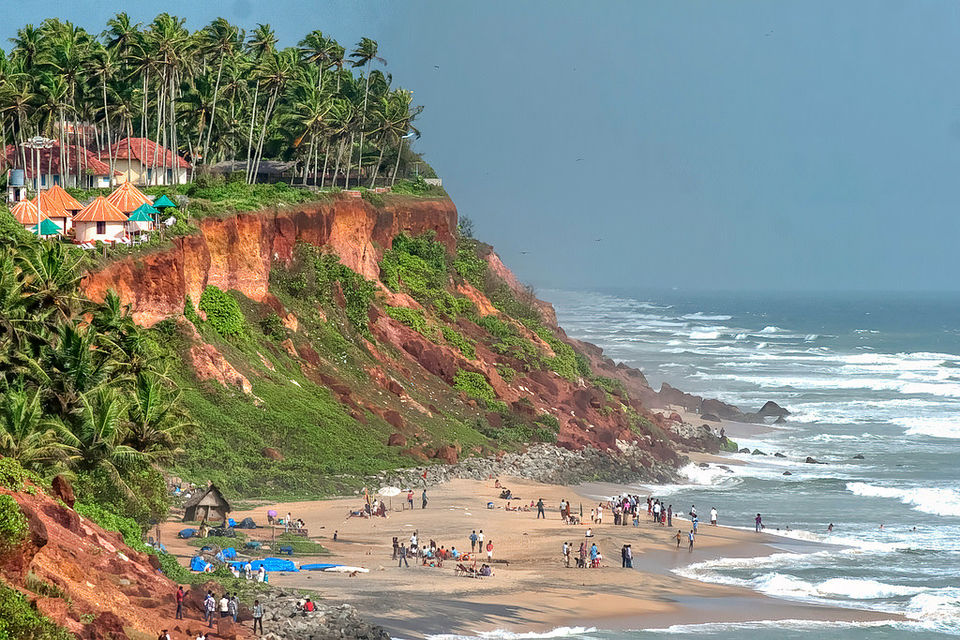
Varkala, a calm and quiet hamlet, lies on the outskirts of Thiruvananthapuram district. It has several tourist attractions that include a beautiful beach, a 2000-year-old Vishnu Temple and the Ashramam - Sivagiri Mutt a little distance from the beach.
The Papanasam Beach (also called as Varkala Beach), which is ten kilometers away from Varkala, is renowned for a natural spring. Which is considered to have medicinal and curative properties. A dip in the holy waters at this beach is believed to purge the body of impurities and the soul of all sins; hence the name 'Papanasam Beach'.
e. Ponmudi

Locals in the capital city of Thiruvananthapuram will declare that a weekend drive to Ponmudi is among the best ways to spend time in the city. Families and friends alike are known to go on long drives up the winding paths for a view they insist rivals any other in the State. The slopes shrouded in mist fill one with a feeling of wonder and amazement. A large amount of rare flora and fauna can be seen here including mountain flowers, wild orchids and exotic butterflies. Ponmudi is indeed a rising hotbed of tourist activity. A hill so close to the city, yet nestled so near the protective arms of the sea.
f. Poovar Island

Unspoiled and unexplored, enveloped by the most serene backwaters, and opening out to the Arabian Sea and a dream golden sand beach, Poovar Island Resort is truly a window into paradise. Built on 25 acres of lush green coconut gardens alongside the beach, the resort currently comprises of elegant land based superior rooms, built around the swimming pool on a natural lily pond and is unique in India for the floating cottages and villas which are afloat on the backwaters and face the sea. Located 30 kms from Trivandrum International Airport, the resort is accessible only by a 10-minute boat ride on the river.
g. Agasthyakoodam
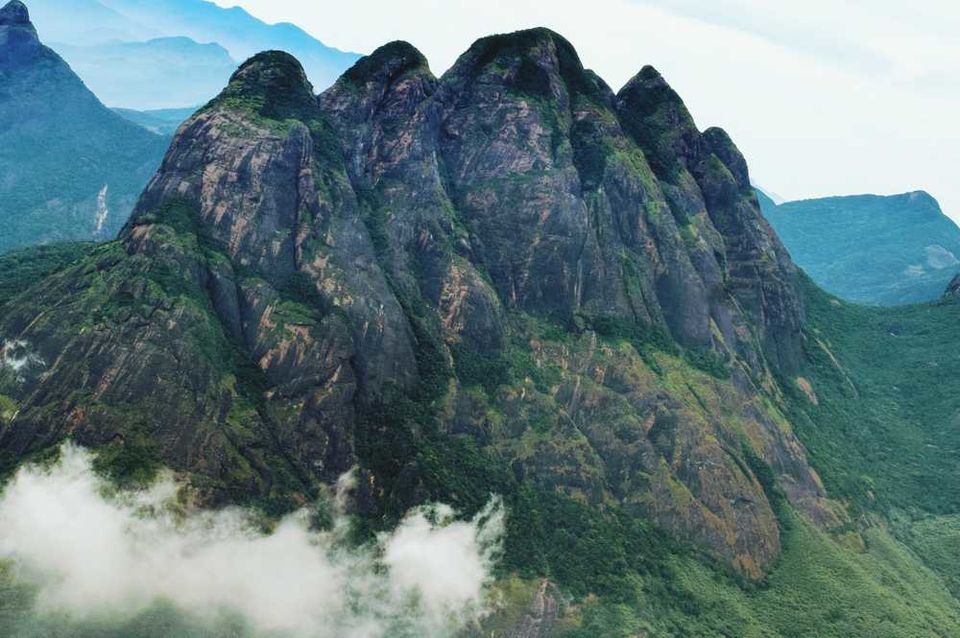
Agasthyakoodam is nature’s ode to bird watchers. One of the highest peaks in Kerala, it has long been known as a bird watcher’s paradise and many gather here to catch sight of exotic avian species. It can be viewed from near Neyyar Dam as well as Bonacaud. Agasthyakoodam is also known for its remarkable flora and fauna, especially certain rare medicinal herbs which have been discovered here. Over 2000 species including lichens, orchids, mosses and ferns have been recorded in the area. The peak was named after the sage Agasthya and is a popular pilgrim site.
If you are able to visit Kerala during any of its annual temple festivals, you can also enjoy the colorful, cultural extravaganza along with the beautiful surrounding. You can find info about the major temple festival of Kerala in the below link.
All the above information can be overwhelming for some! You can thank me later! I surely hope this article comes handy to anyone looking to explore Kerala. I was overwhelmed just compiling this data together. Kerala is a haven on earth and once you have visited this place, you would seldom disagree. "God's on Country" is a tag Kerala justifies with mesmerizing views to offer any side you choose to explore.
Follow Gireesh on his Instagram page for more such delightful travel stories!
Think we missed out on something? Tell us about it in the comments below. Or write about it here on Tripoto and earn Tripoto Credits!
Chat with us on Whatsapp to help us plan your next trip!

